03-15 08:52发布于安徽
Arts Highlights
CISH
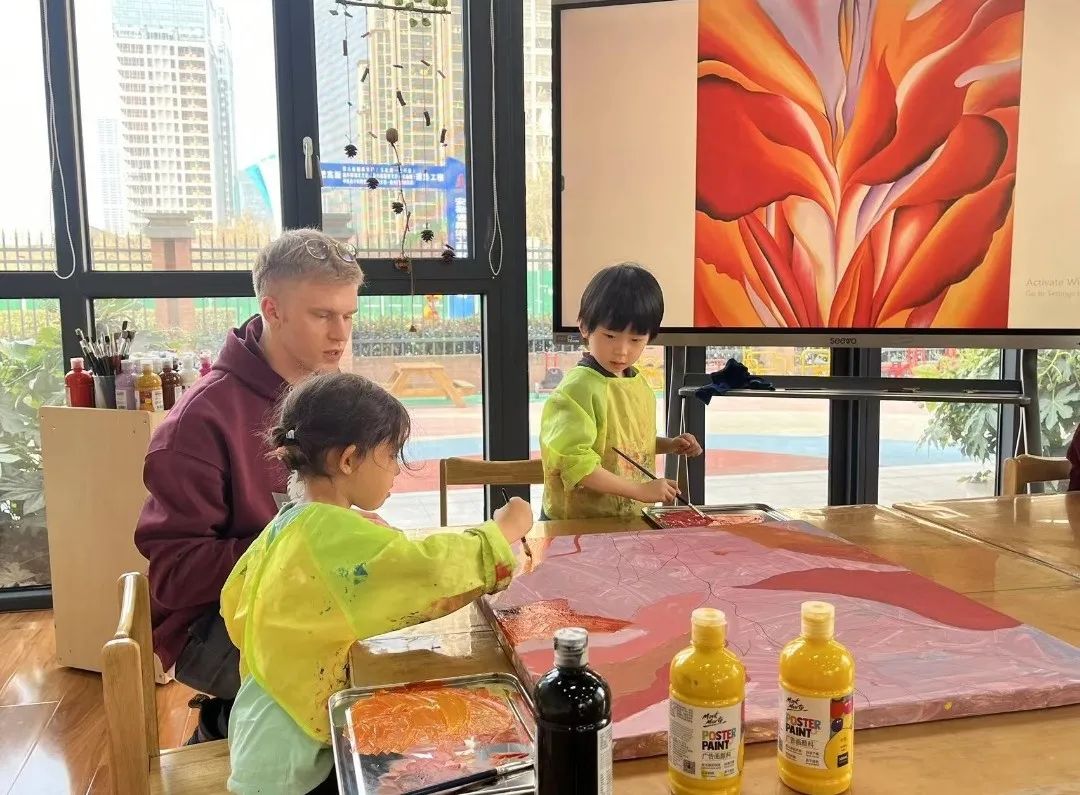
EY Arts
Class Photos
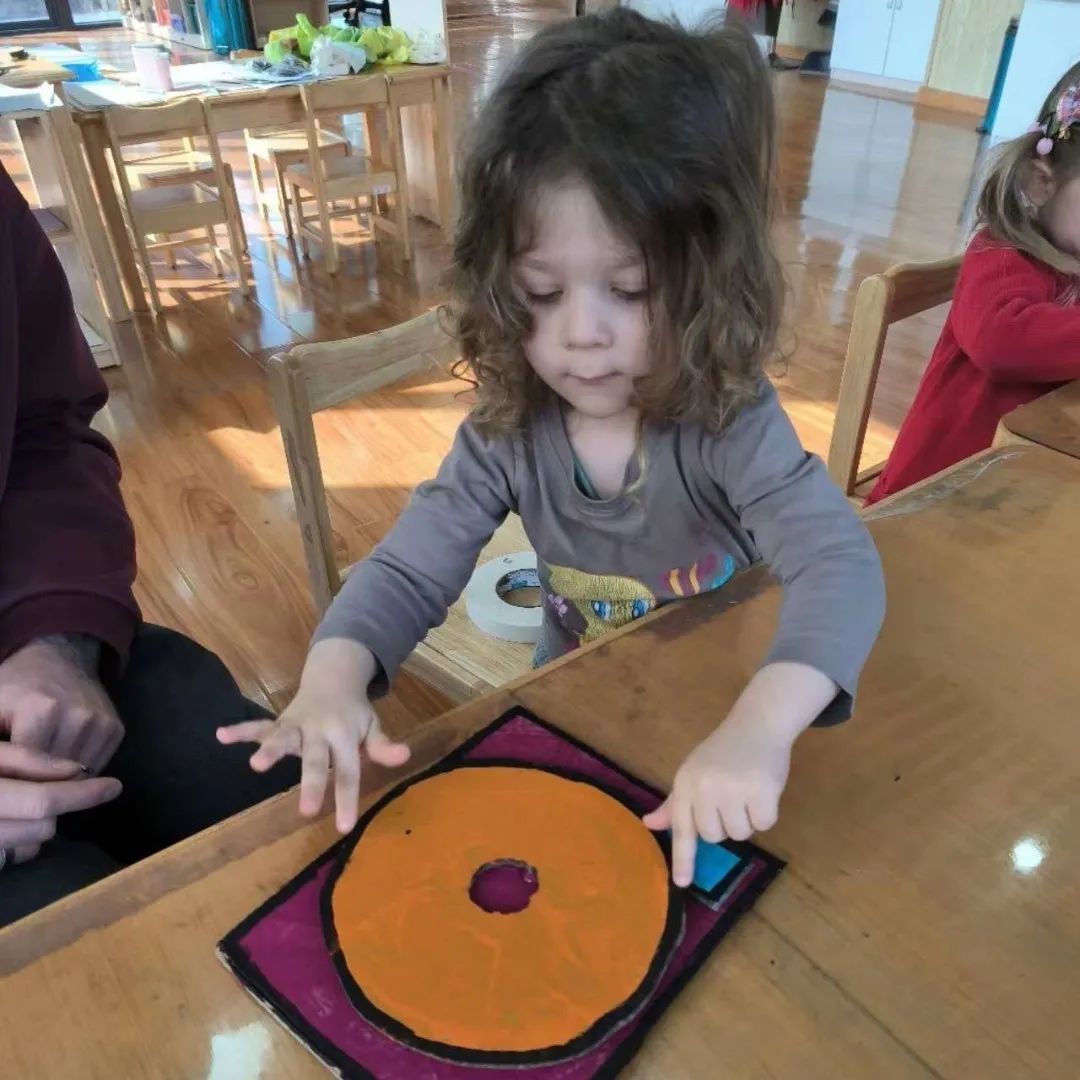
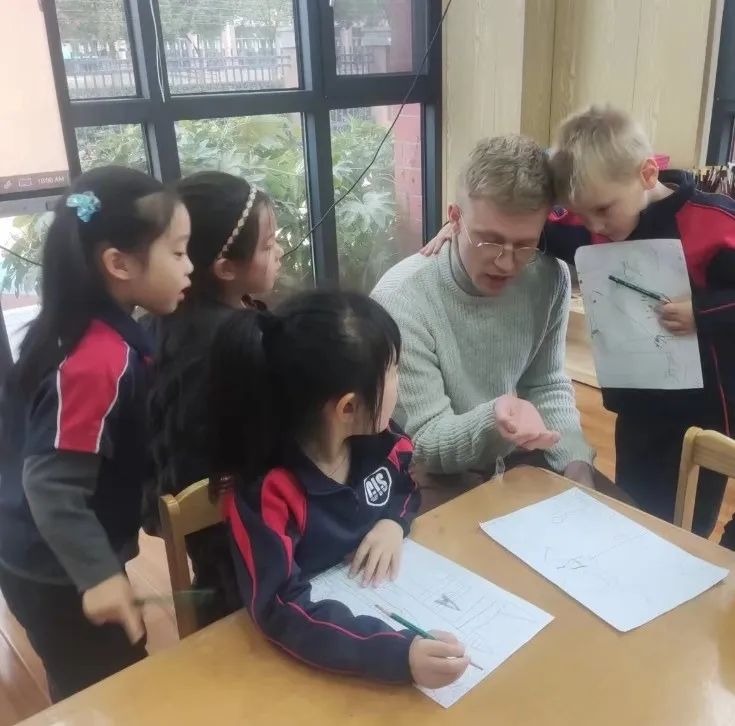
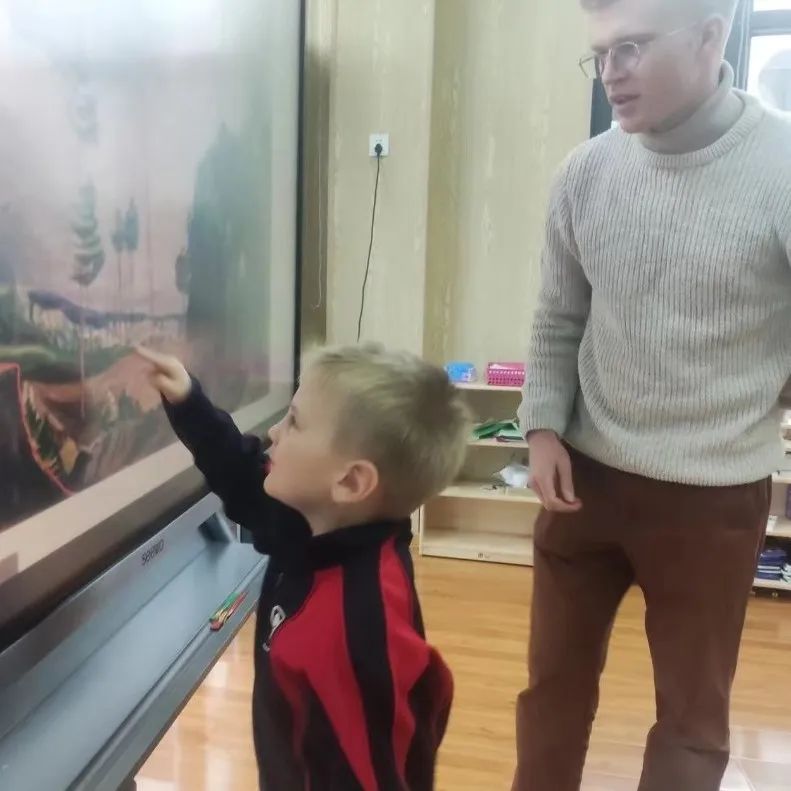
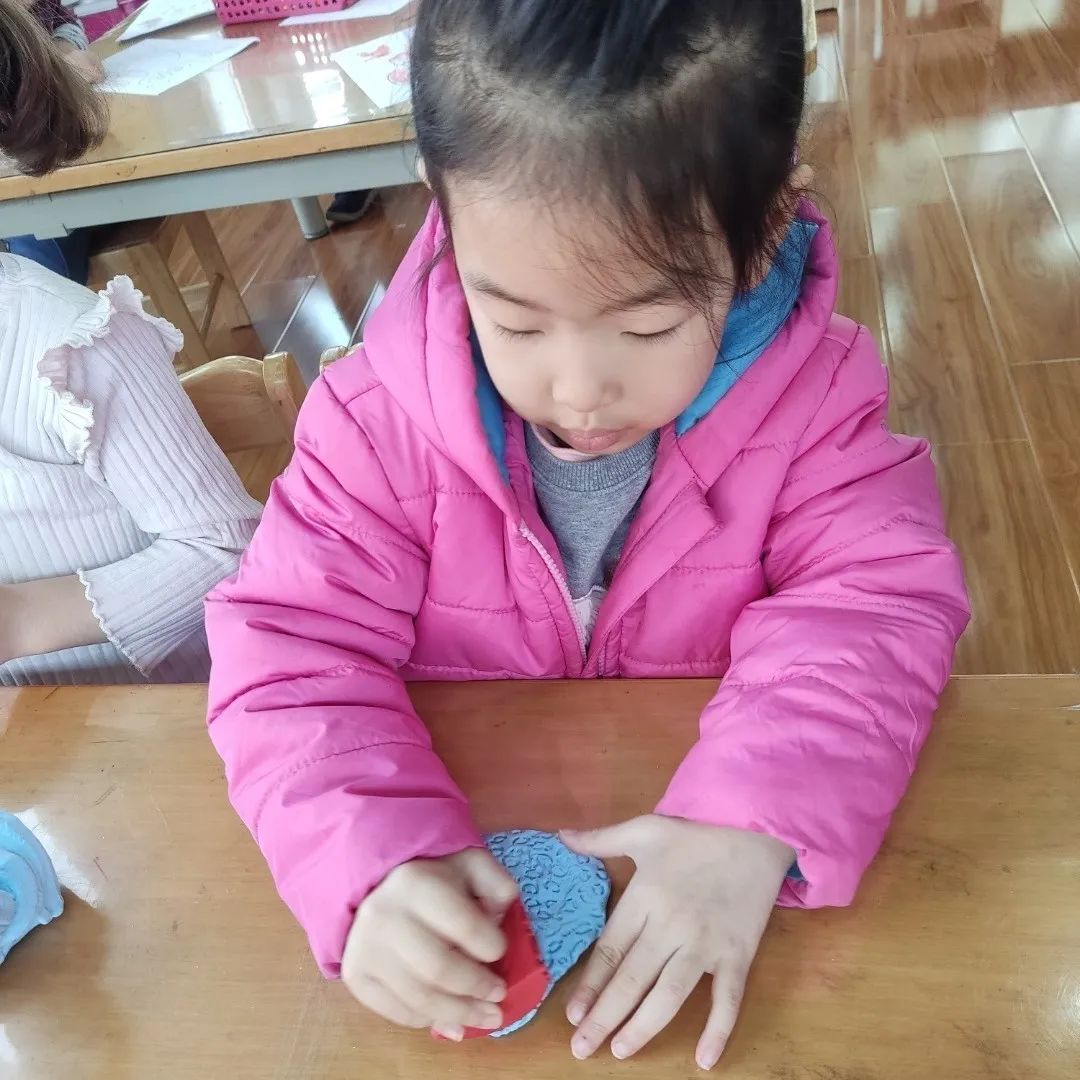
Pre-K (Evan Kirby)
This week, the students have been working collaboratively to create a stunning backdrop for their Keith Haring-inspired mural. Their brushwork has greatly improved, and they have thoroughly enjoyed the process of bringing their characters to life while learning to handle paint and brushes with skill. I am immensely proud of the progress each student has made in their ability to engage with the material, and the results are truly exceptional. Keep up the excellent work, team!
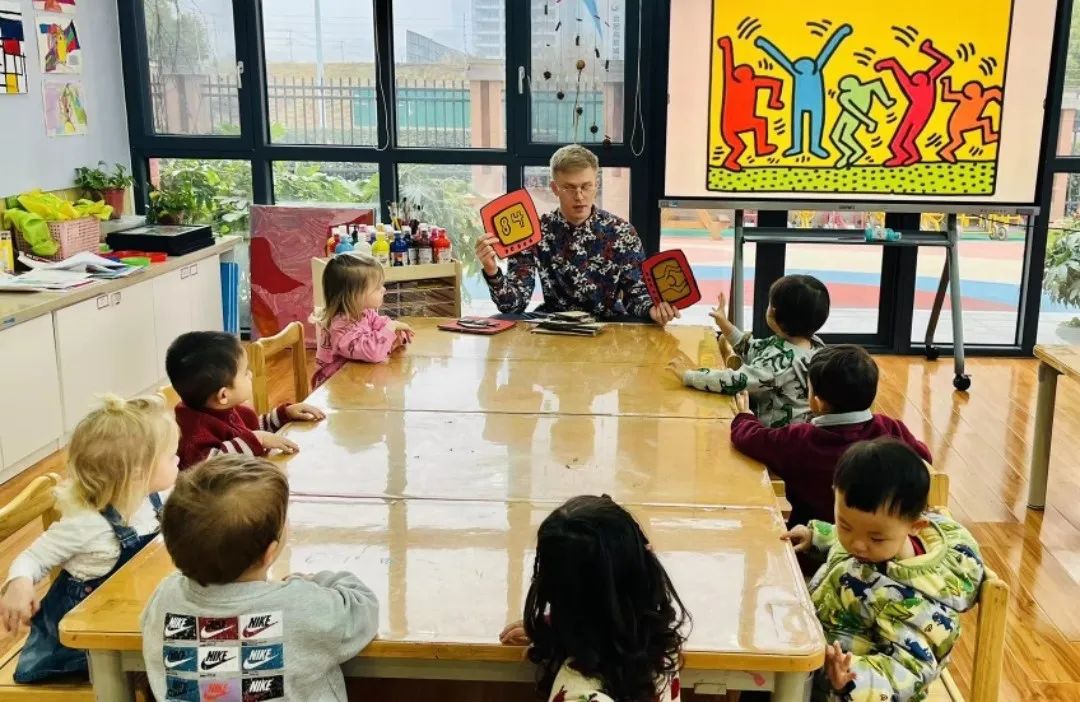
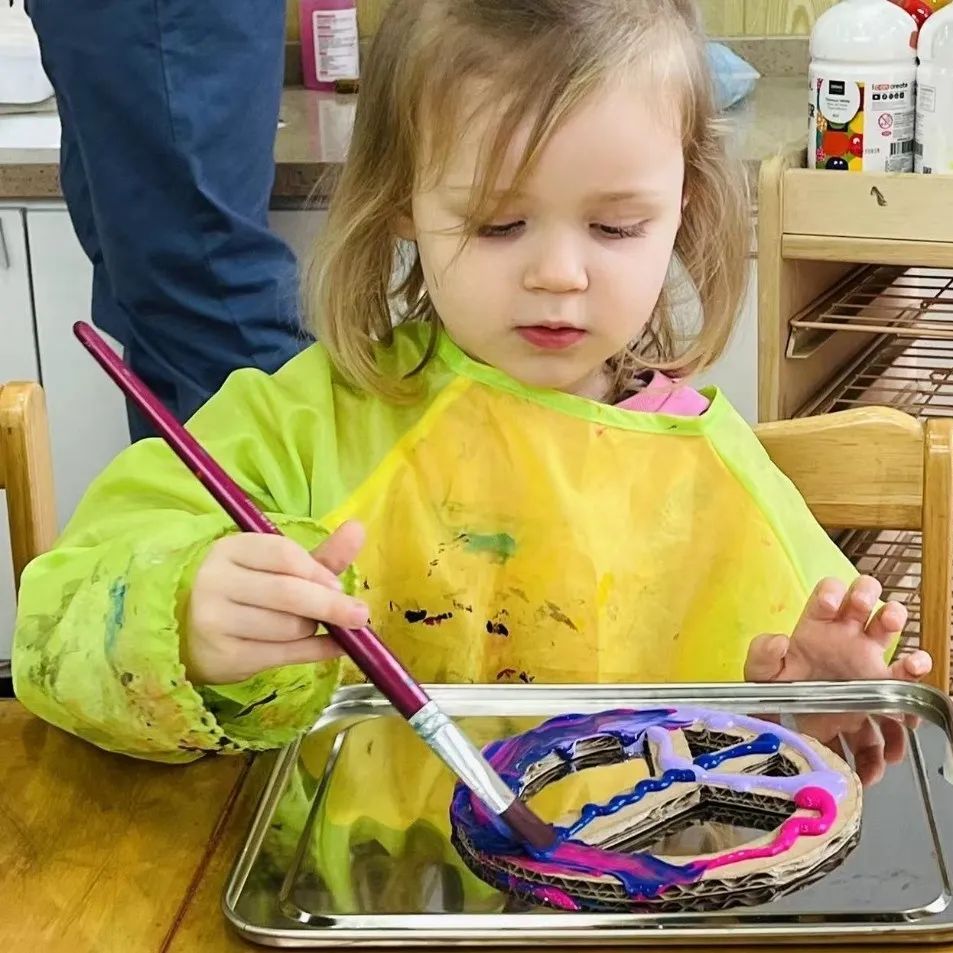
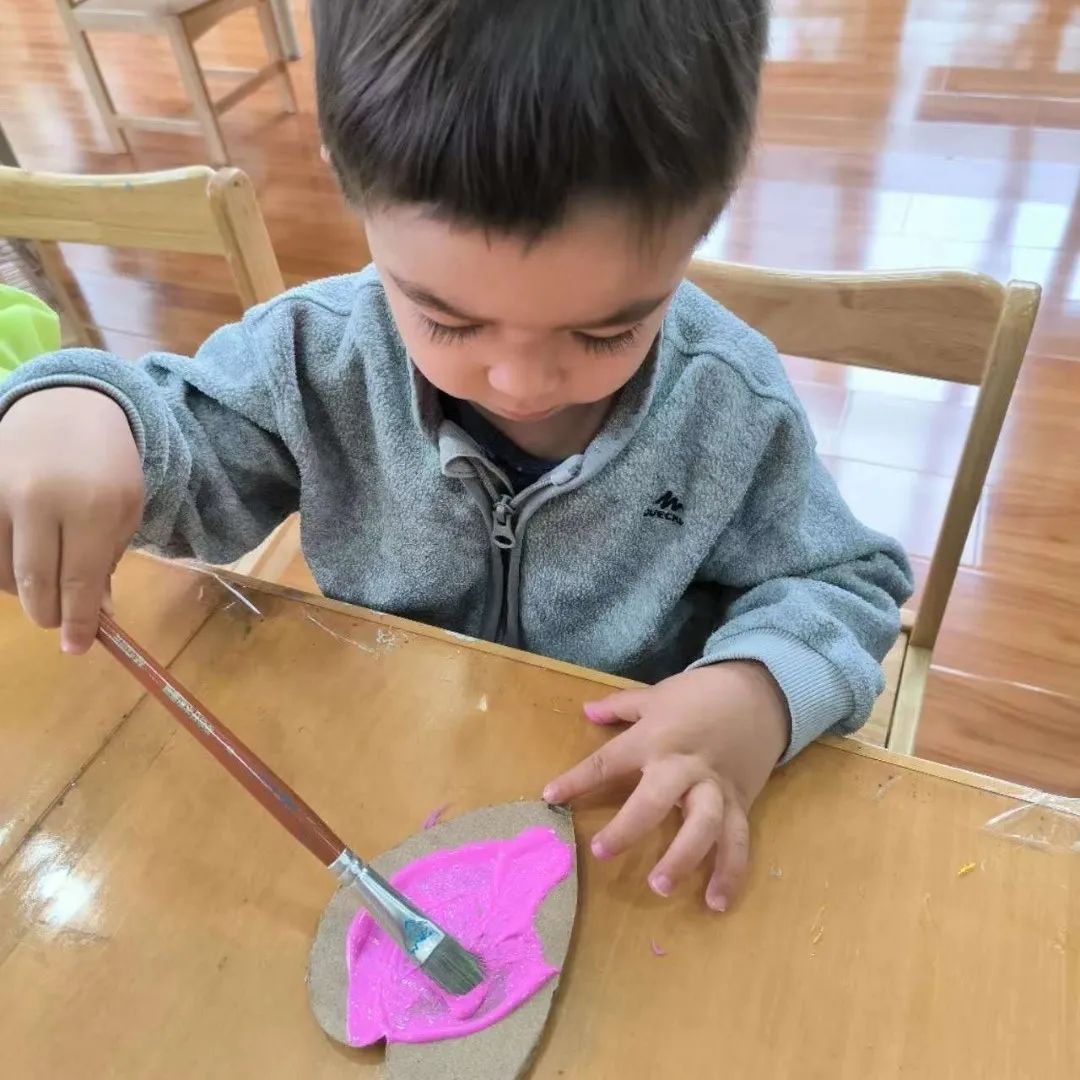
Arts
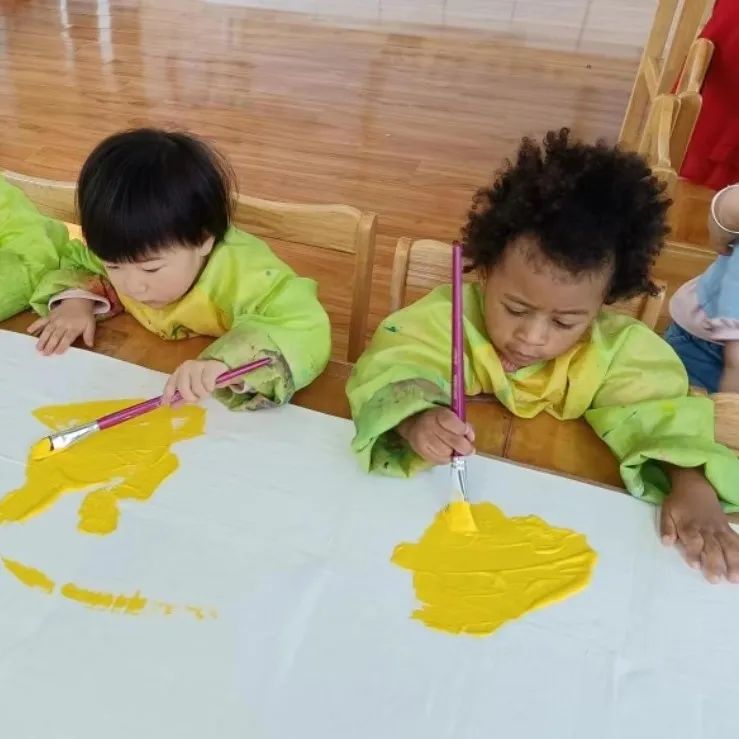
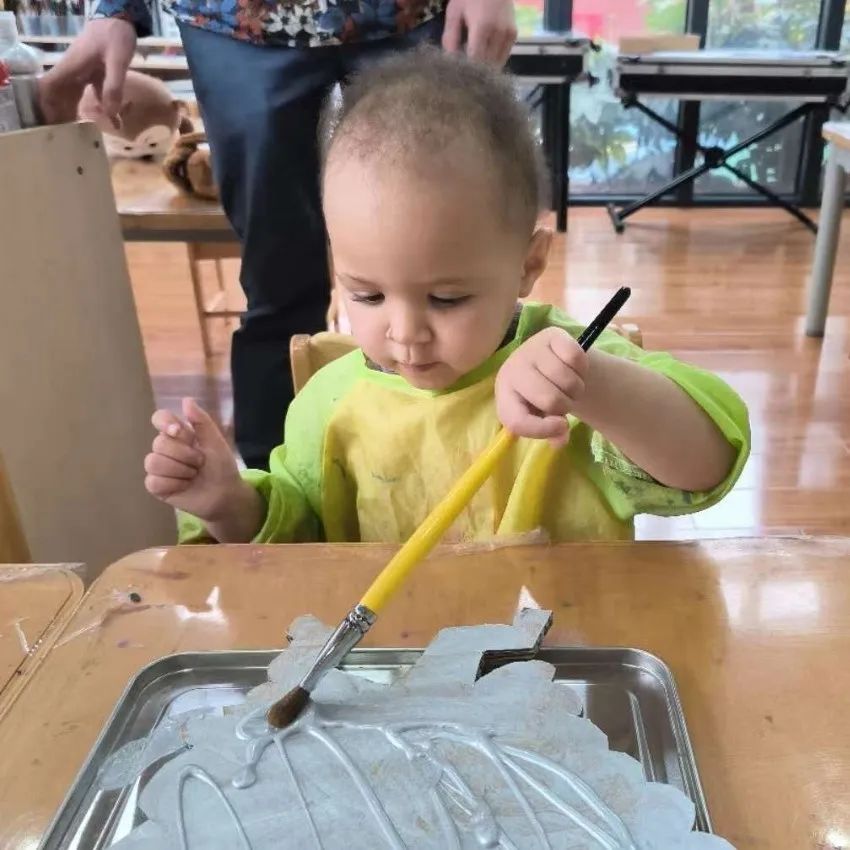
K1 (Evan Kirby)
This week the students began their final pass on the Lee Krasner inspired paintings. I know abstract art can be difficult to understand, so I have included a photo of the painting we are referencing. The painting is called “Untitled”, was created in 1964 and is now owned by the MoMA in New York. Each student has done such an excellent job working on their project and respecting the rules for the techniques used to create each layer of their painting. I am so proud of how much they have improved in their ability to work with the varied materials in the art room! Excellent work team!
Slide pictures to see more
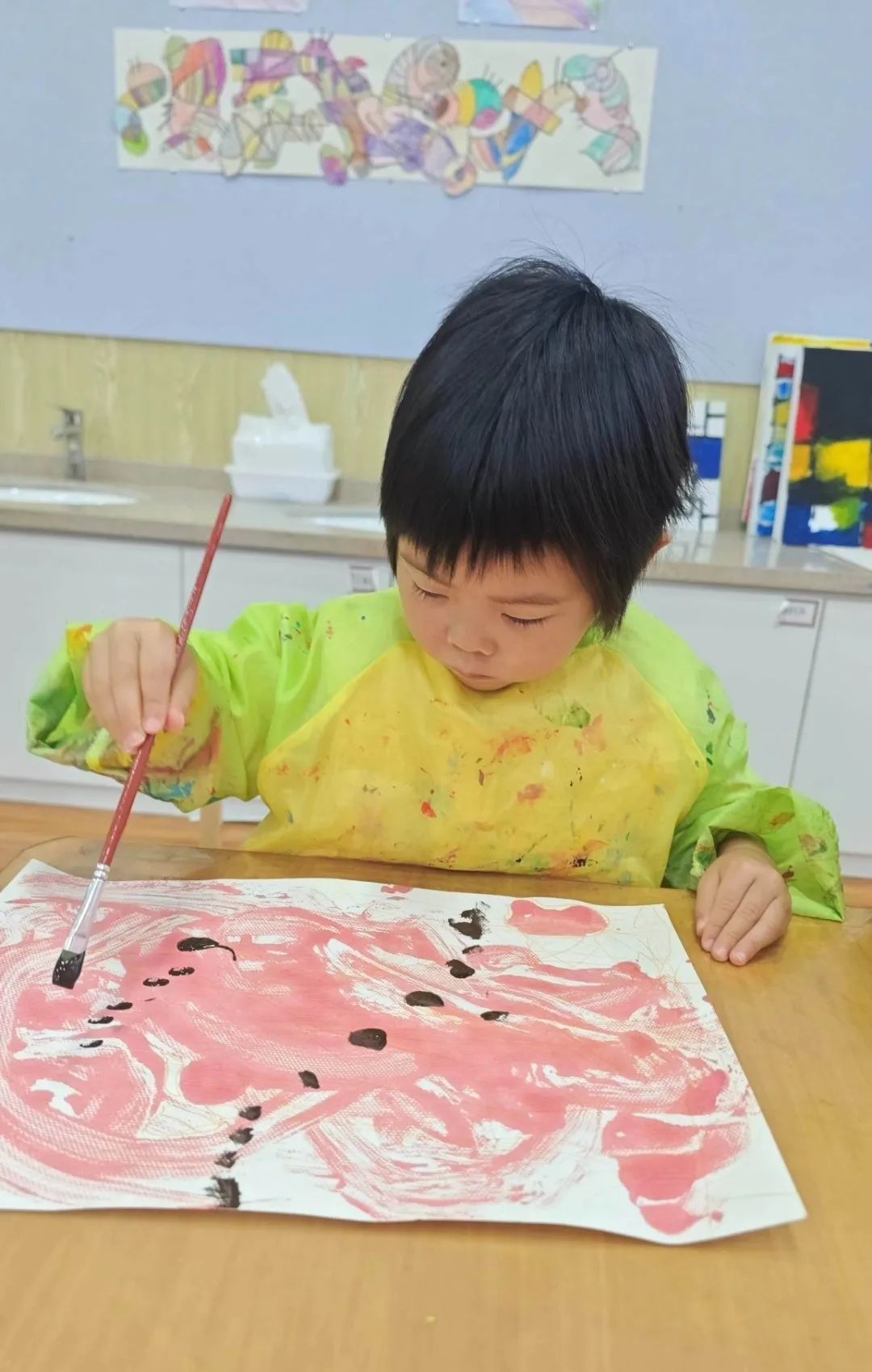

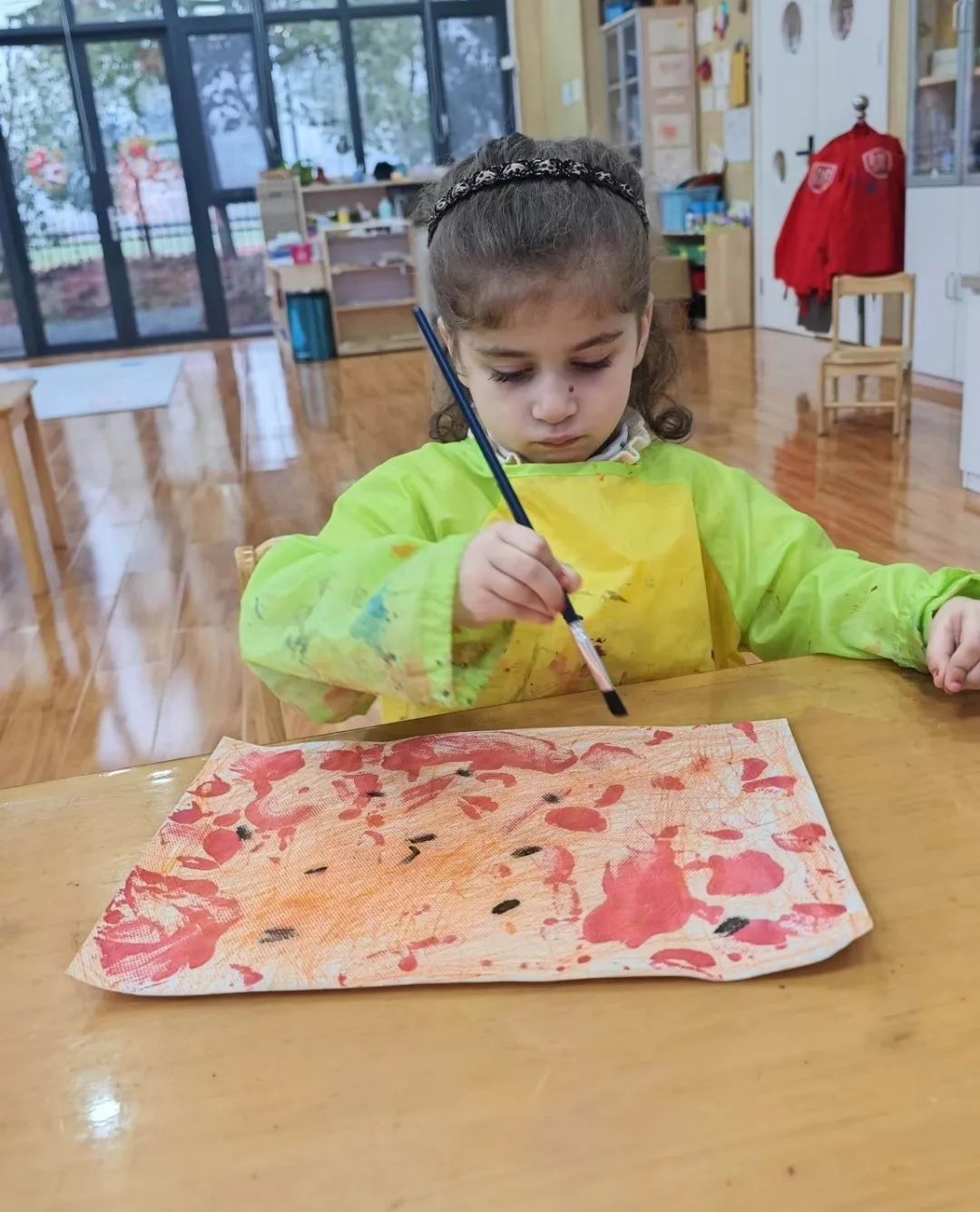
K2 (Evan Kirby)
This week the students continued their collaborative class projects inspired by Georgia O'Keeffe. O’Keeffe was known for the brilliant colors she used in her paintings of flowers and landscapes of New Mexico. I have been working closely with each individual student to help them improve their brush control and color mixing. I am proud of the student's ability to work together on such a big project. Everyone is doing such an excellent job!
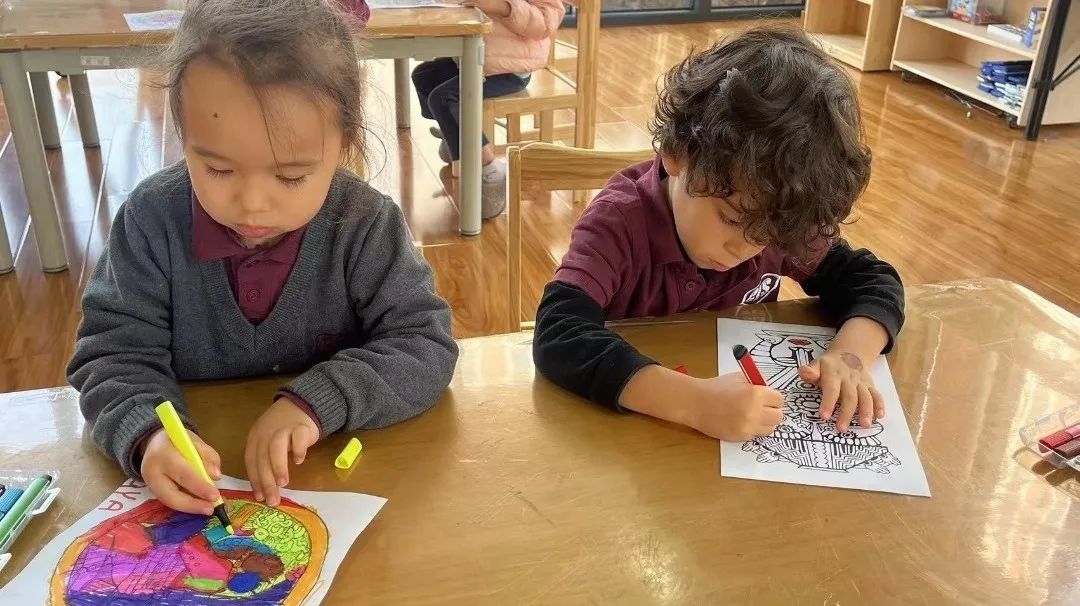
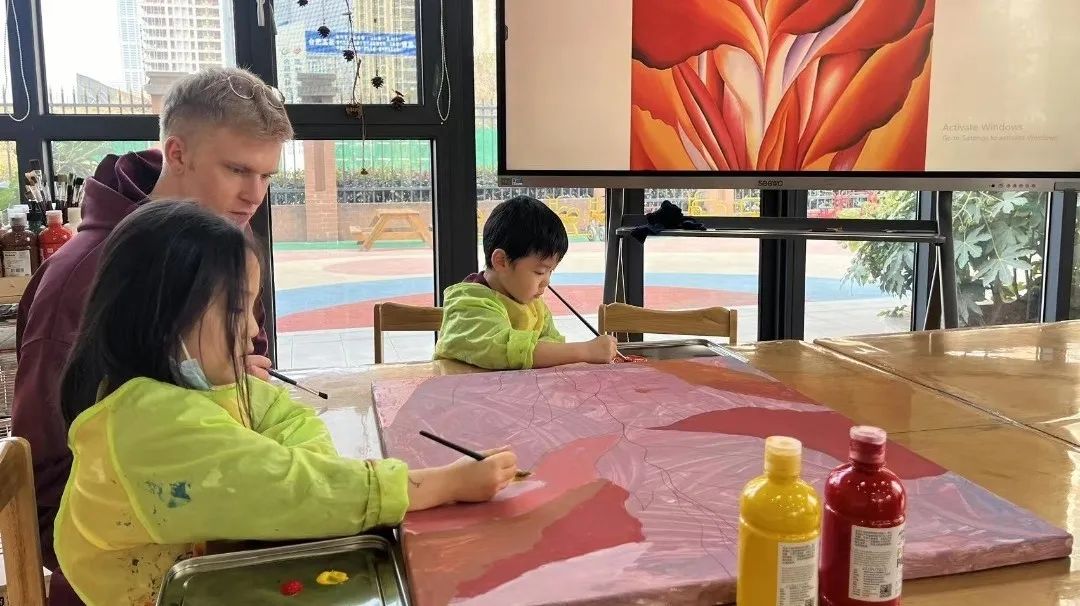
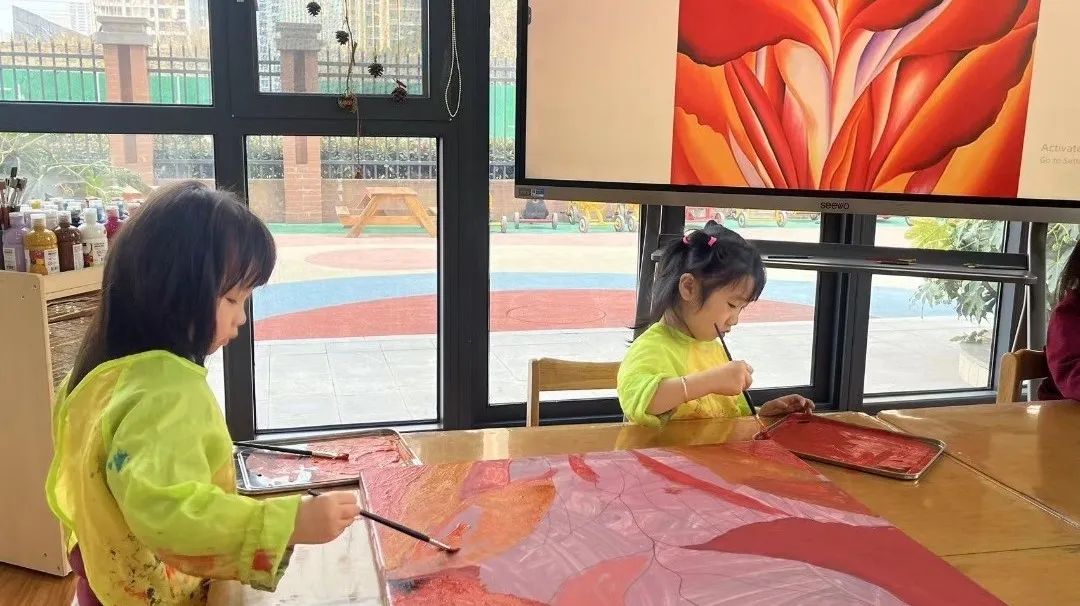
K3 (Evan Kirby)
This week the students are beginning their project on Emily Carr! She was a famous Canadian artist who was known for her expressionist landscapes in the early 1900’s. The students this week are learning to identify the lines and brush strokes in a landscape painting so they can draw out the rough drafts for their future works. Everyone did such an amazing job with their sketches and analyzing Emily Carr’s works of art.
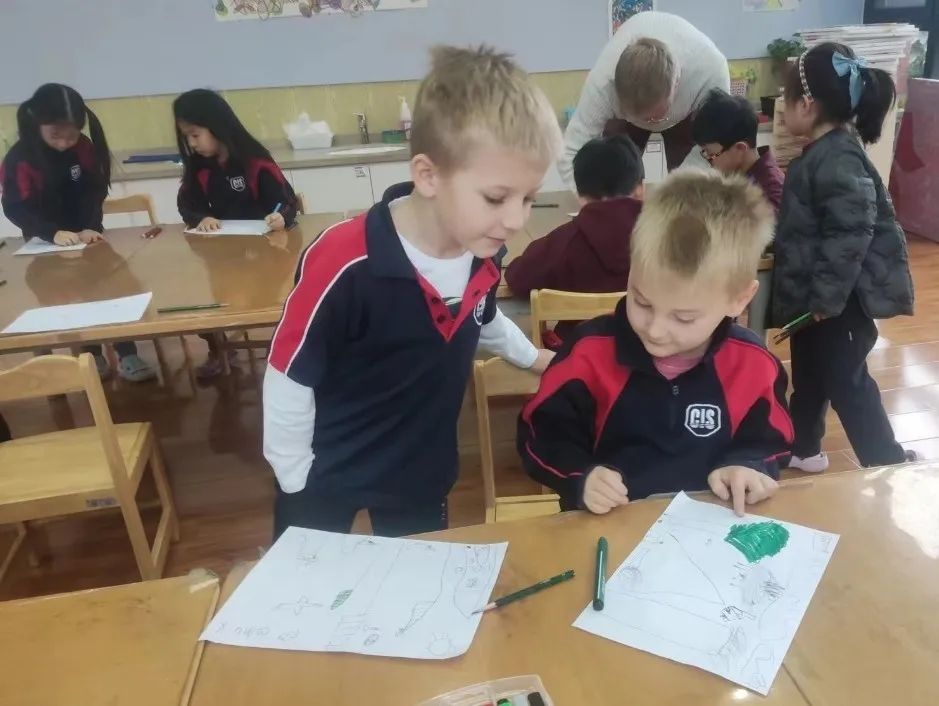
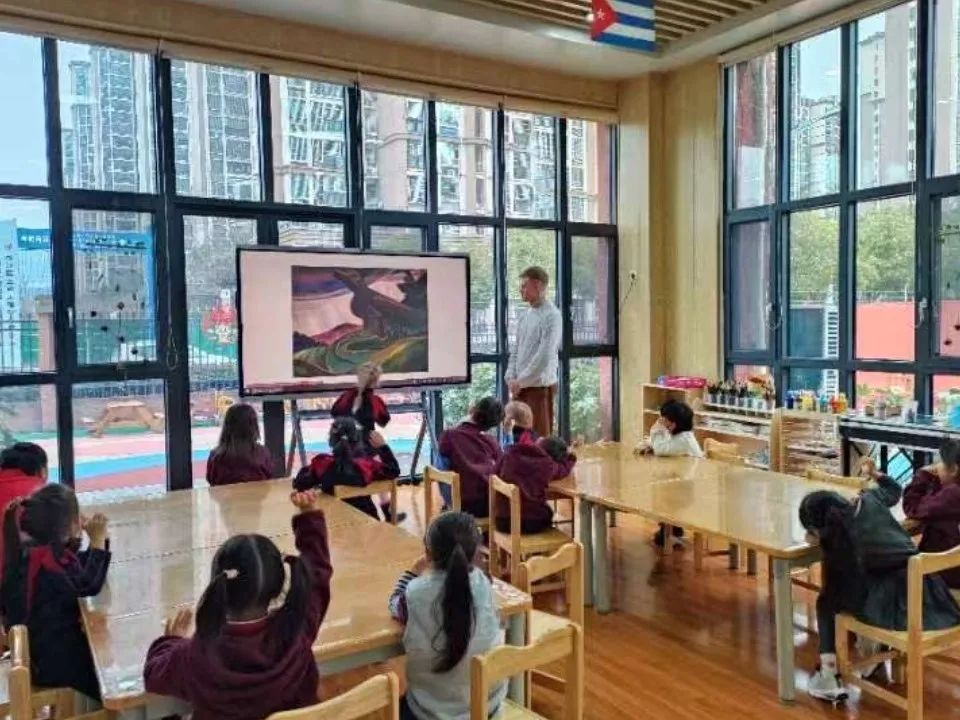
Grade 1 (Katija Bogdanic)
Continuing our printmaking unit in Art Class, this week we finish our first project by gluing our castle prints to our painted skies. We also learned about radial balance and created foam block prints using shape stickers for our next printmaking project. Students were focusing on pattern, shape, and composition.
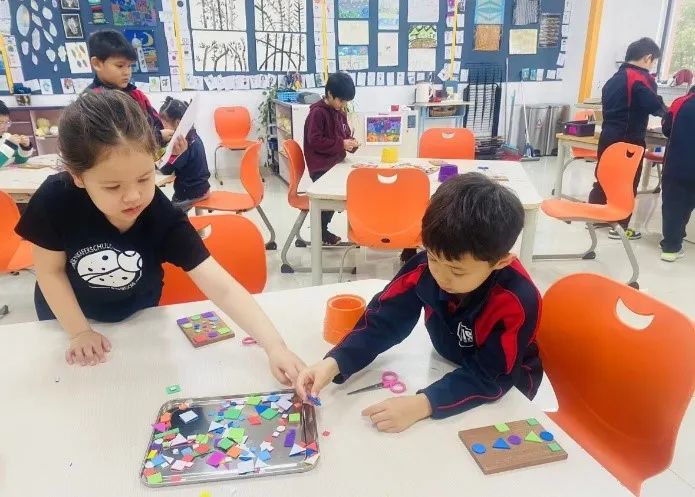
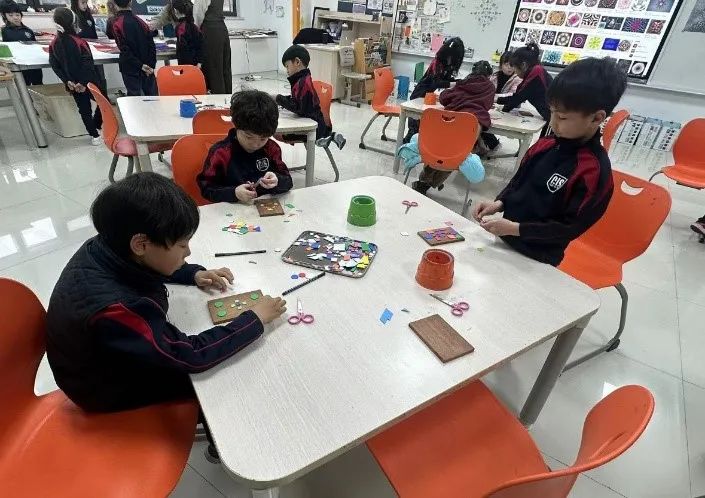
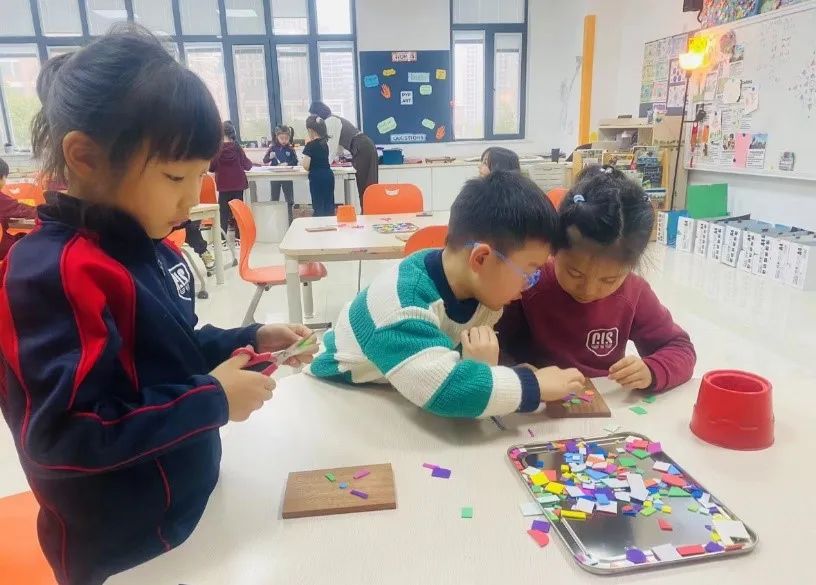
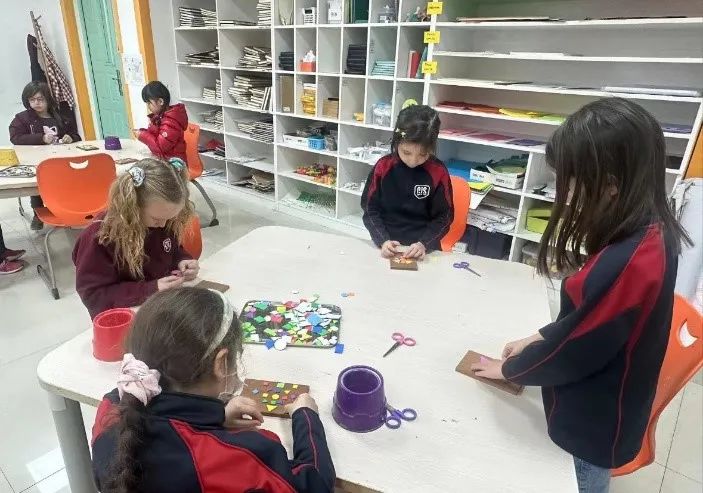
Grade 2 (Katija Bogdanic)
This week in art class we are continuing our zentangle projects by focusing on patterns. We participated in a gallery walk to review our progress, highlighting the strengths and improvements in our work so far. Next week we will use these patterns for our first positive/negative space project.
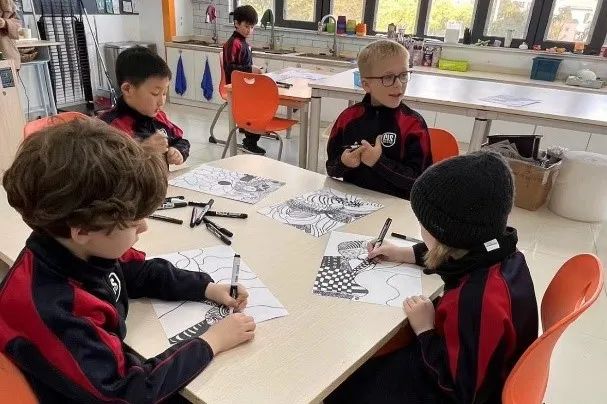
Slide pictures to see more
Grade 3 (Katija Bogdanic)
In art class this week we continued to make the base of our paper mâché “Lost Thing” sculptures. We engaged in a class-wide gallery walk to learn from each other’s techniques and structural stability. Students were encouraged to work collaboratively and communicate their tips and offer support to one another.
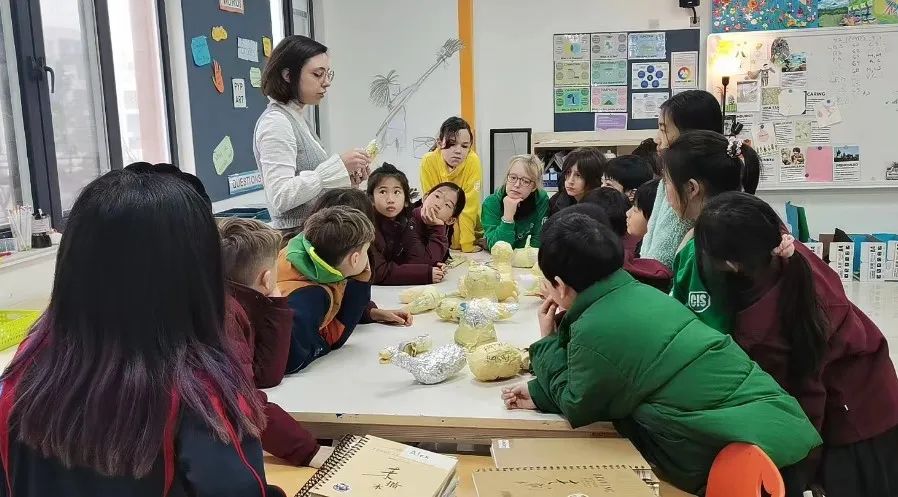
Slide pictures to see more
Grade 4 (Katija Bogdanic)
This week we focused on being principled and caring as some groups are continuing to finish their stop-motion videos. Students helped each other with their recordings, offering technical support and offering their skills to help others finish their projects.
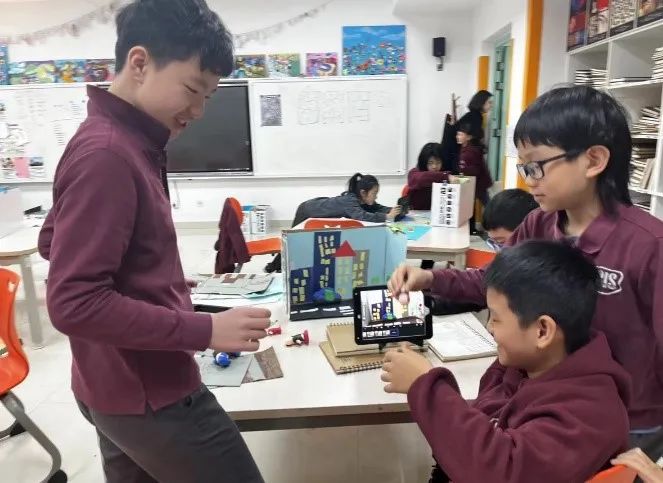
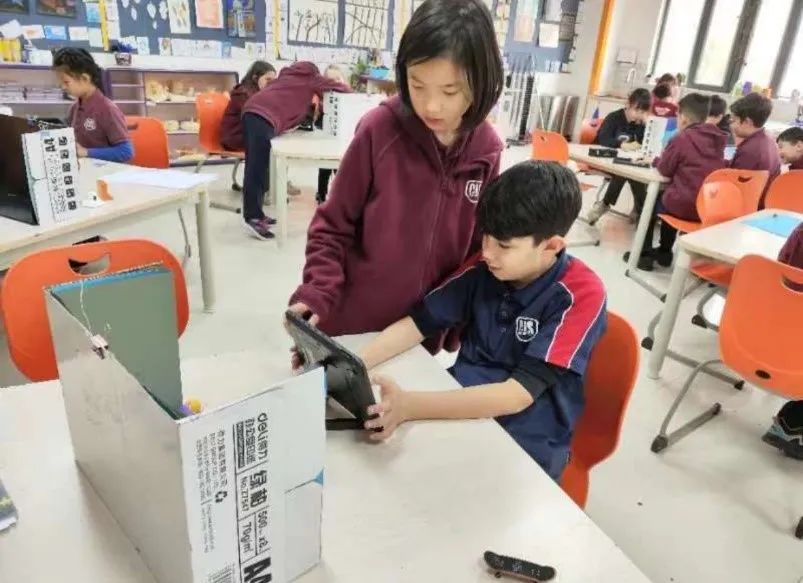
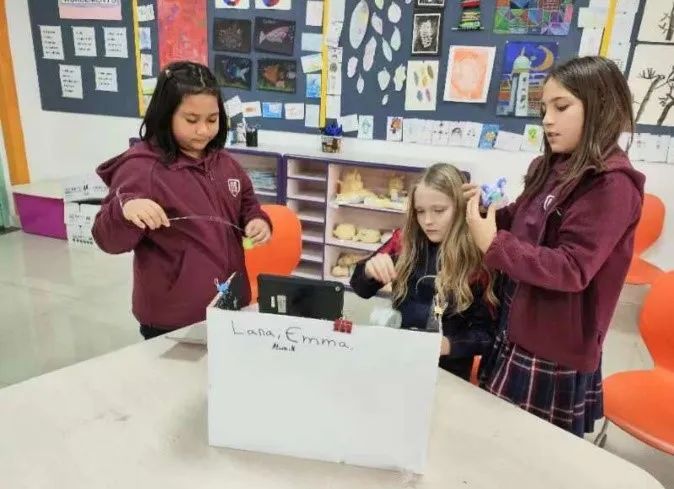
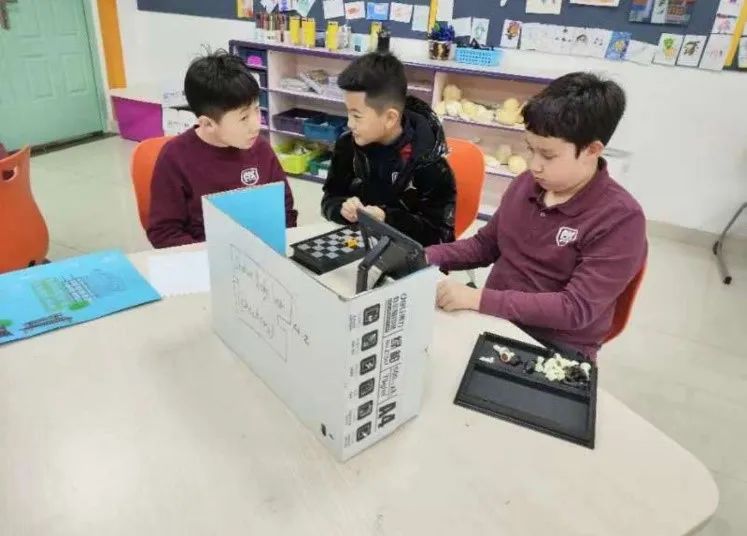
Grade 5 (Katija Bogdanic)
This week we reviewed the basic elements of the Pop Art movement. We responded to the works of famous artists such as Roy Lichtenstein, Andy Warhol, and Eduardo Paolozzi. Students began to research further into the Pop Art movement to construct a project inspired by their selected artist.
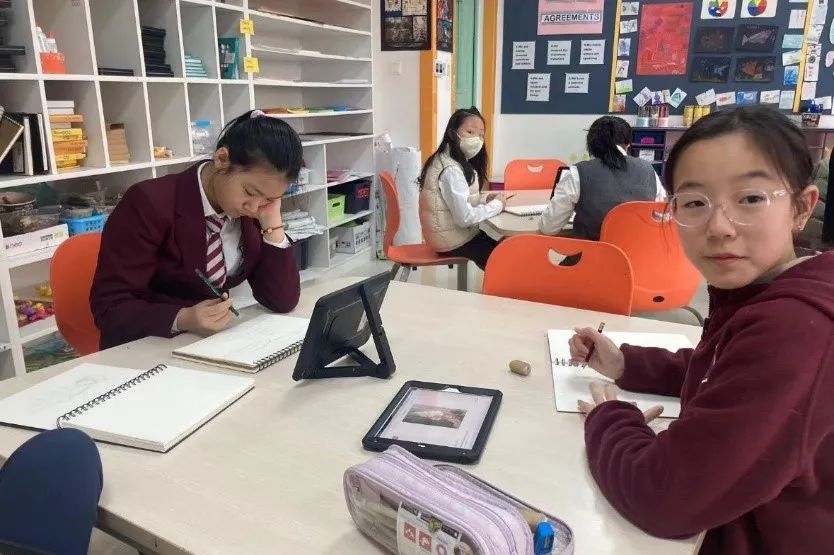
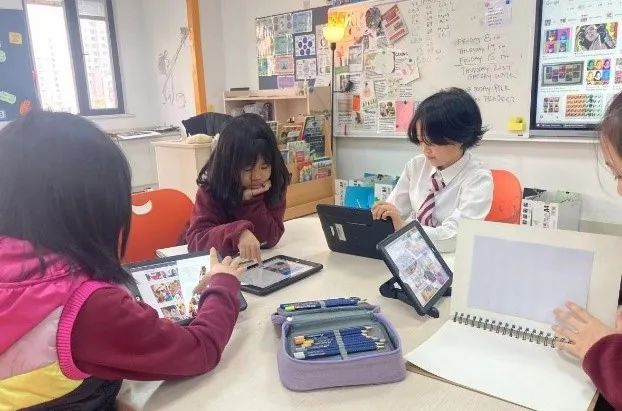

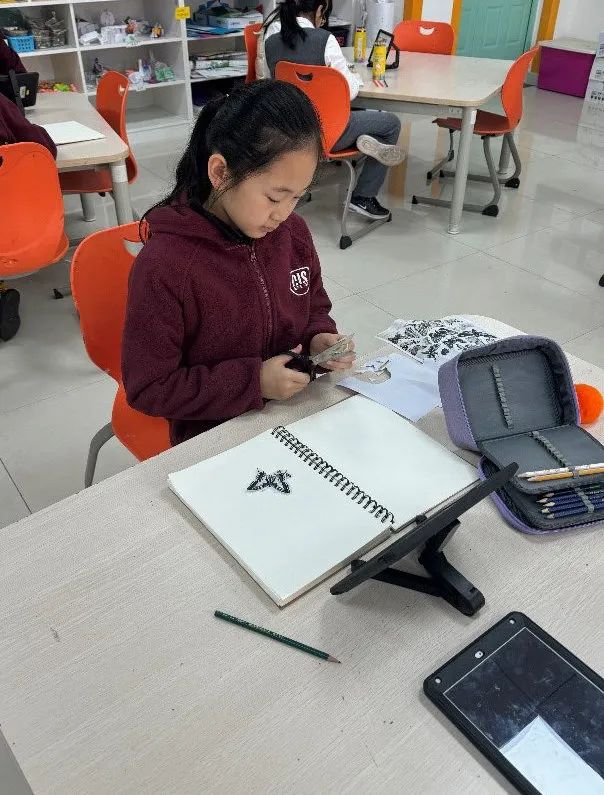
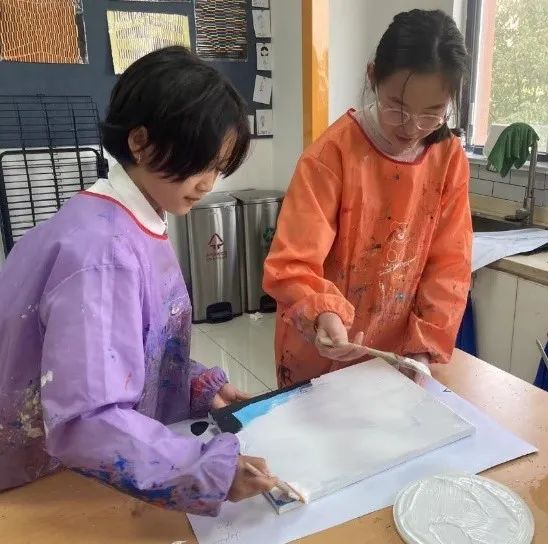

Grade 6 (Roxane Joubert)
This week, our Grade 6 IBVisual Arts class immersed themselves in their UNIT 3 summative assessment,focusing on 'Communities and Visual Expression.' Engaging with a specificindigenous art style, students discovered its value and merits, then crafted theirunique interpretations. They explored the cultural and social significance ofartistic expression, encouraging a diverse exploration of mediums, processes,and techniques. Our Grade 6 students embraced the opportunity to expressthemselves through the lens of communal and visual narratives, incorporatingthemes discussed in I&S that further enhance their understanding of theirworld.
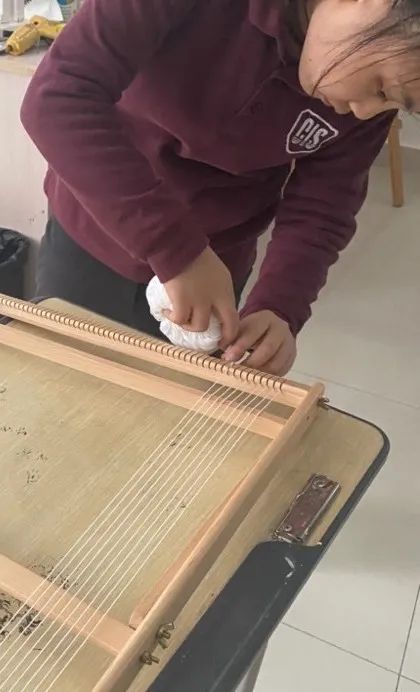
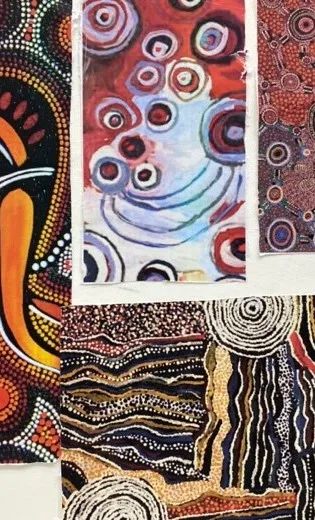
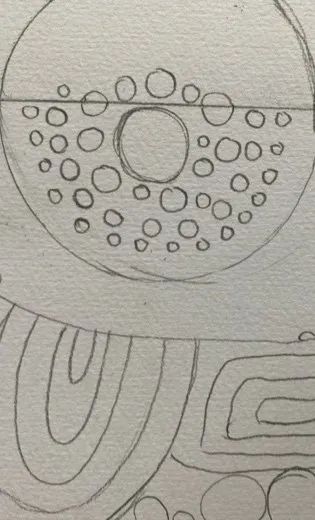
Grade 7 (Roxane Joubert)
This week, Grade 7 students commenced with their UNIT 3 summative assessment, focusing on 'Pop Art - The Art that Popped’. Having explored Pop Art's origins, purpose, and influence, students were encouraged to investigate notable Pop Art artworks with the aim to develop their own dynamic pieces. Emphasis was placed on printing processes, the use of graphic design techniques, and the sensible use of colour and imagery. The journey into this genre promises a vibrant and creative learning experience for our young emerging CISH artists.
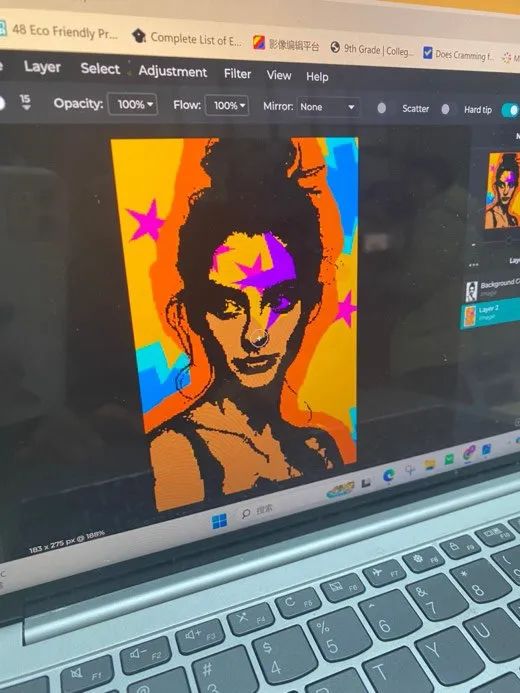
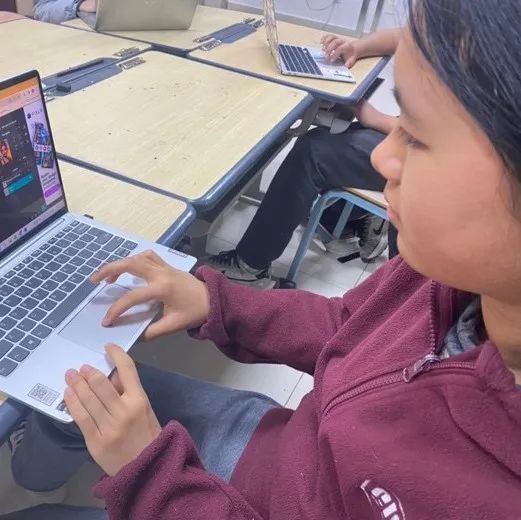

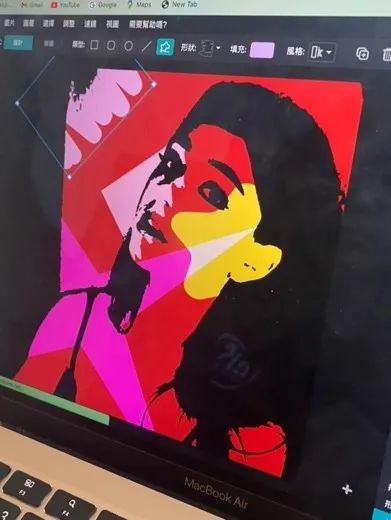
Grade 8 (Roxane Joubert)
This week in the Visual Arts, Grade 8 students kicked off their UNIT 3 summative assessment, centered around the theme "Art for Show: Shadow Puppets Performance." Groups refined their scripts, assumed diverse roles, and distributed tasks. Leveraging sketchbooks, they generated a series of sketches to conceptualize their shadow puppets. With black construction paper, they crafted their puppets in anticipation of the upcoming shadow puppets performance. The collaborative nature of this unit encourages creativity and teamwork, encouraging a dynamic learning experience.
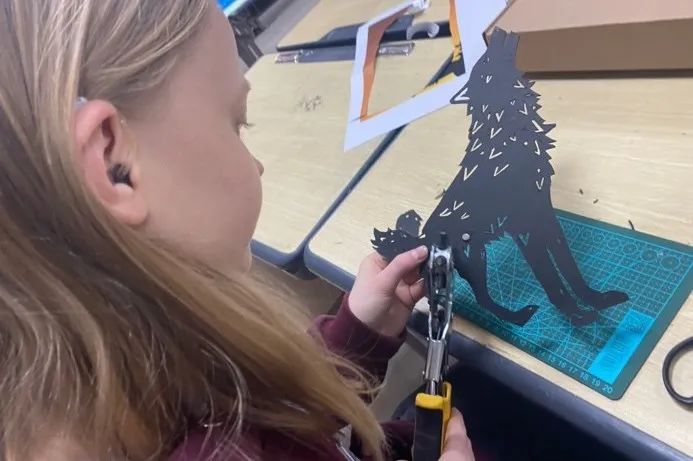
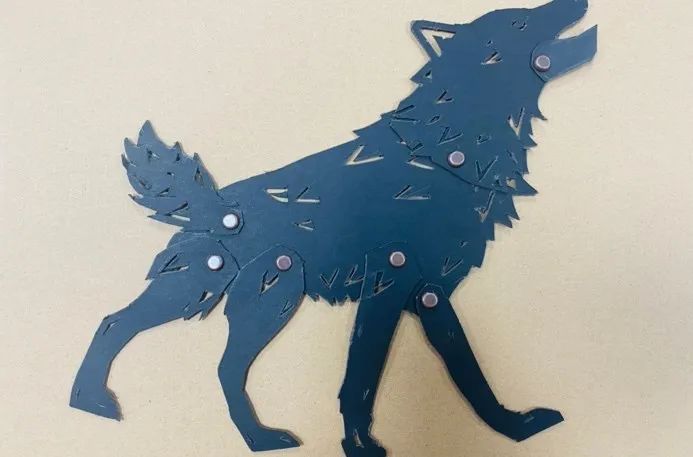

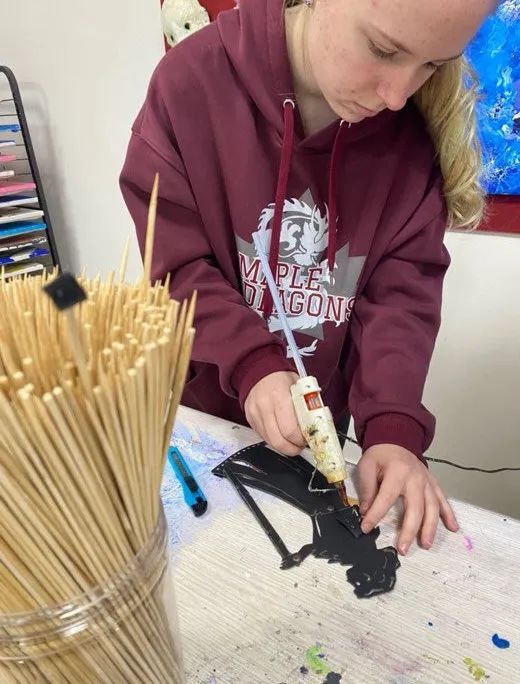
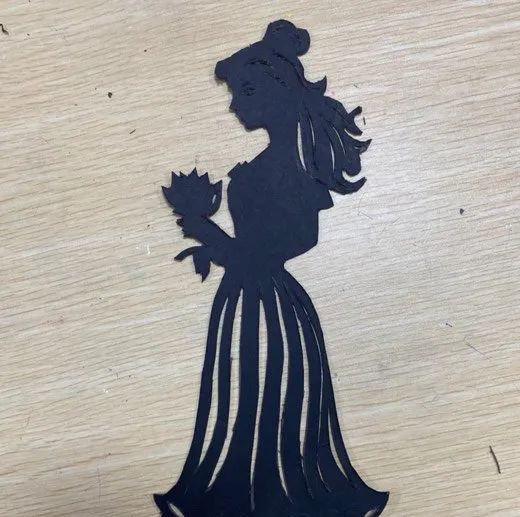
Grade 9 (Lucian Stefanescu)
Impressionist paintings are today among the most admired of all artworks. They are the pride of every private and public collection. As a rule, they offer a visual feast, and posses a magic of their own that captivates the more and less experienced art lover alike. Impressionism represents the grand finale of a particular way of appropriating the world through painting or drawing. This method often termed realism, evolved in Europe in the dawn of the modern era and it was anchored in a tradition dating back to Antiquity. But Impressionism also established various features that were preconditions and characteristics of 20th century modern art, and by its almost instantaneous global influence, it became a turning point in the history of visual arts.
During this unit, Grade 9 students will study the historical, social and cultural context in which Impressionism appeared and developed. They will understand the reasons and consider the influence it had on subsequent art movements and on the modern art as a whole. They will develop their practical skills experimenting with new mediums while referring to the Impressionist painting techniques.
During this week our students finalized their research and started working on their sketches of ideas for their Impressionist painting, while a few students started working on their final painting.
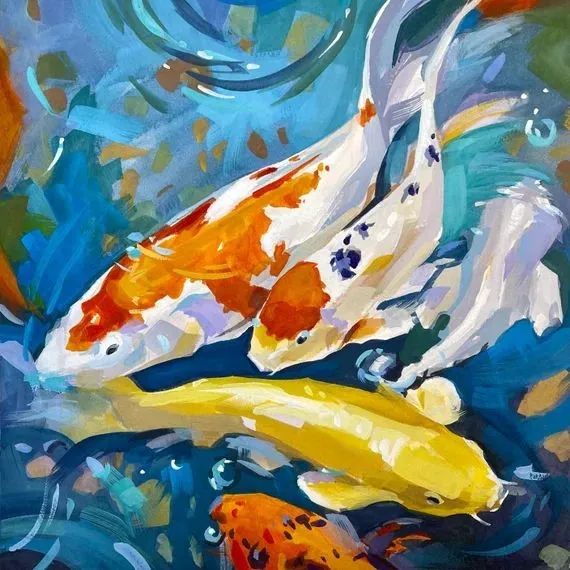
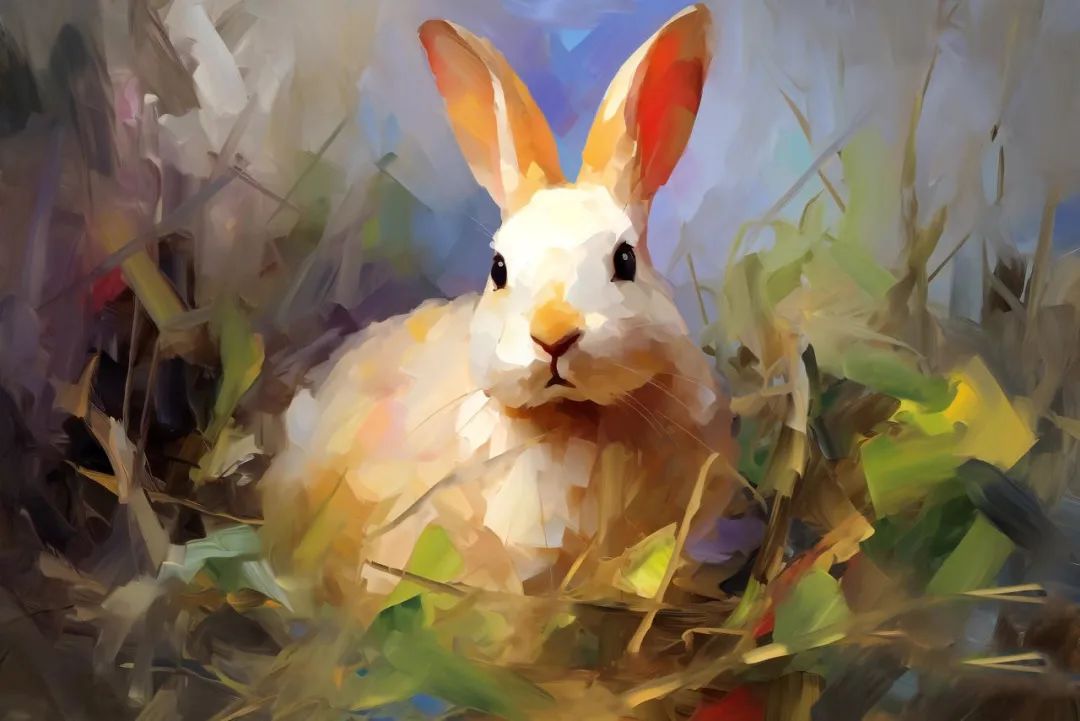
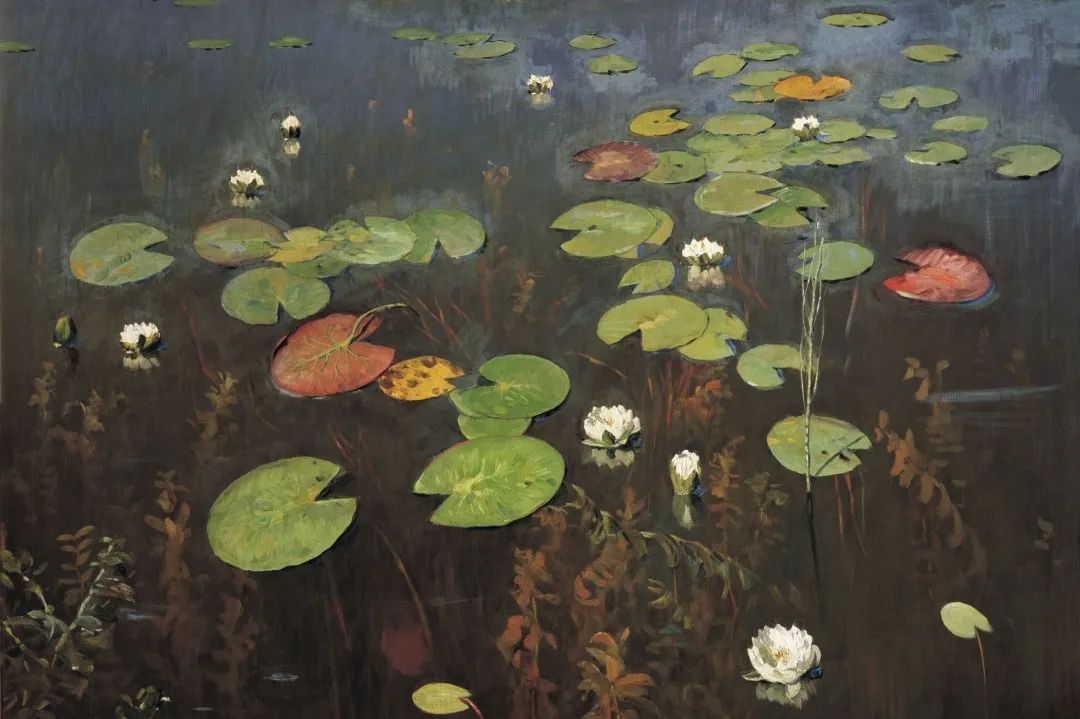
Grade 10 (Lucian Stefanescu)
Founder of the Metaphysical Art movement, Giorgio de Chirico was one of the most influential artists of all times. Never achieving the fame of a Leonardo da Vinci, Pablo Picasso or Salvador Dali. he nevertheless had an immense influence on the later and the art movement he brought to fame, Surrealism. Although distinctive in style, both movements share a dreamlike and often vaguely threatening, mysterious quality of a “painting that which cannot be seen” as coined by Roderick Conway Morris. During this unit Grade 10 students will solicit and expand their ability to represent their dreams through visual analogies and metaphors.
Having finalized their research, during this week our students started working on their sketches of ideas for their final painting. A few of them started working on their final painting.

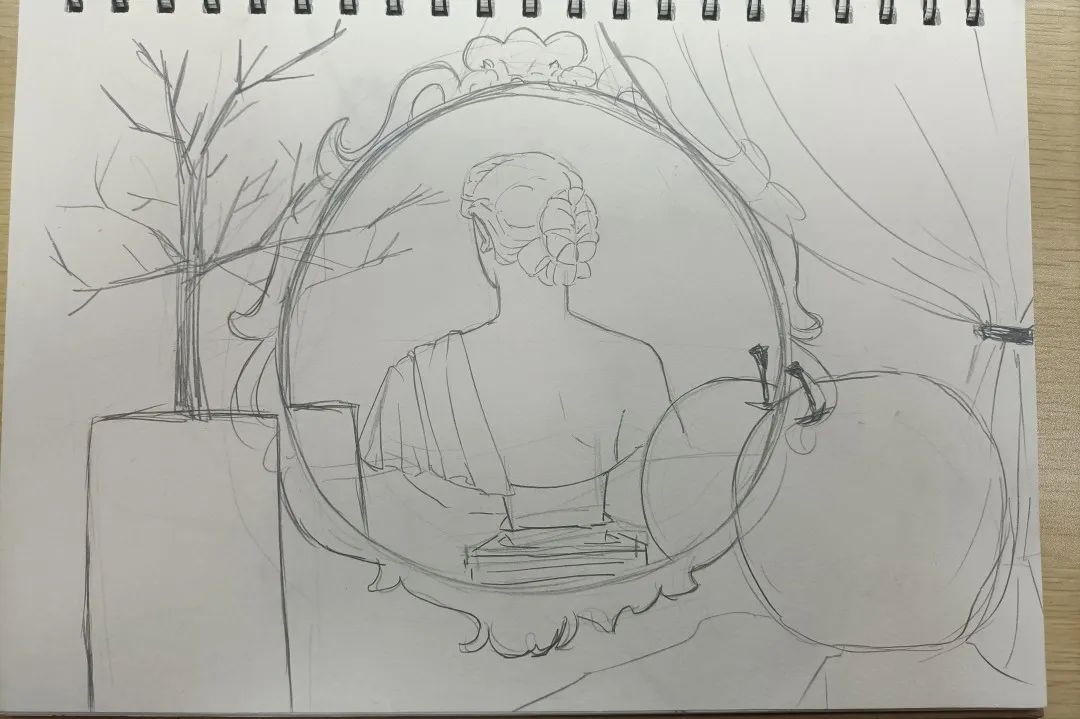
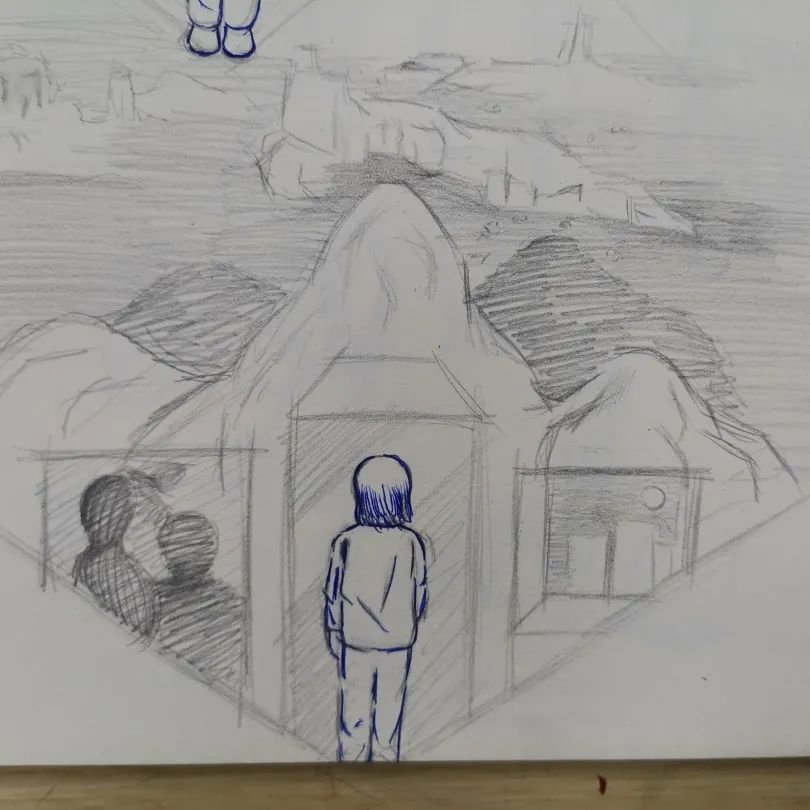
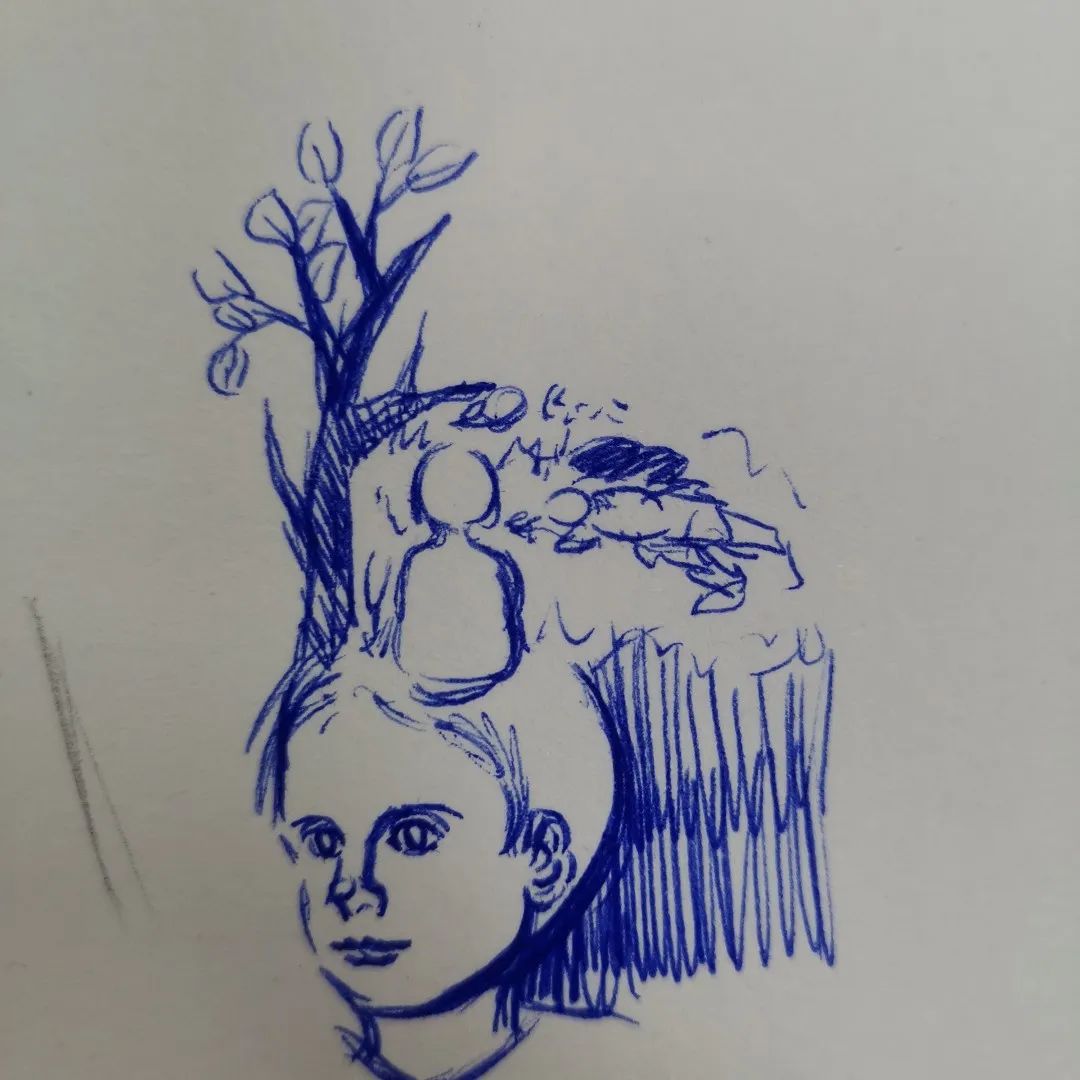
Arts Class
DP (Lucian Stefanescu)
In New Brunswick Programme, our student is preparing her pieces for the final exhibition.
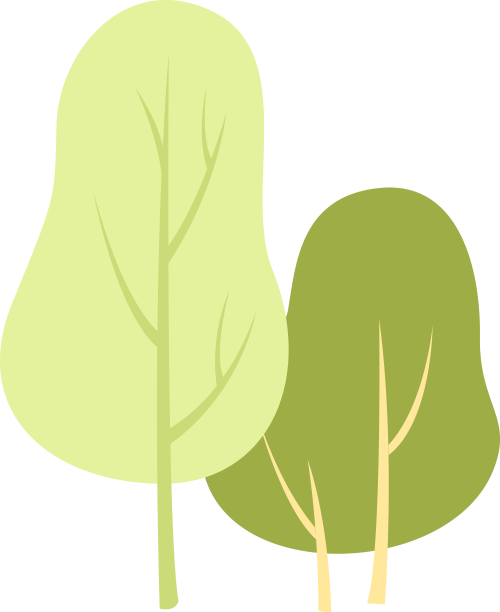
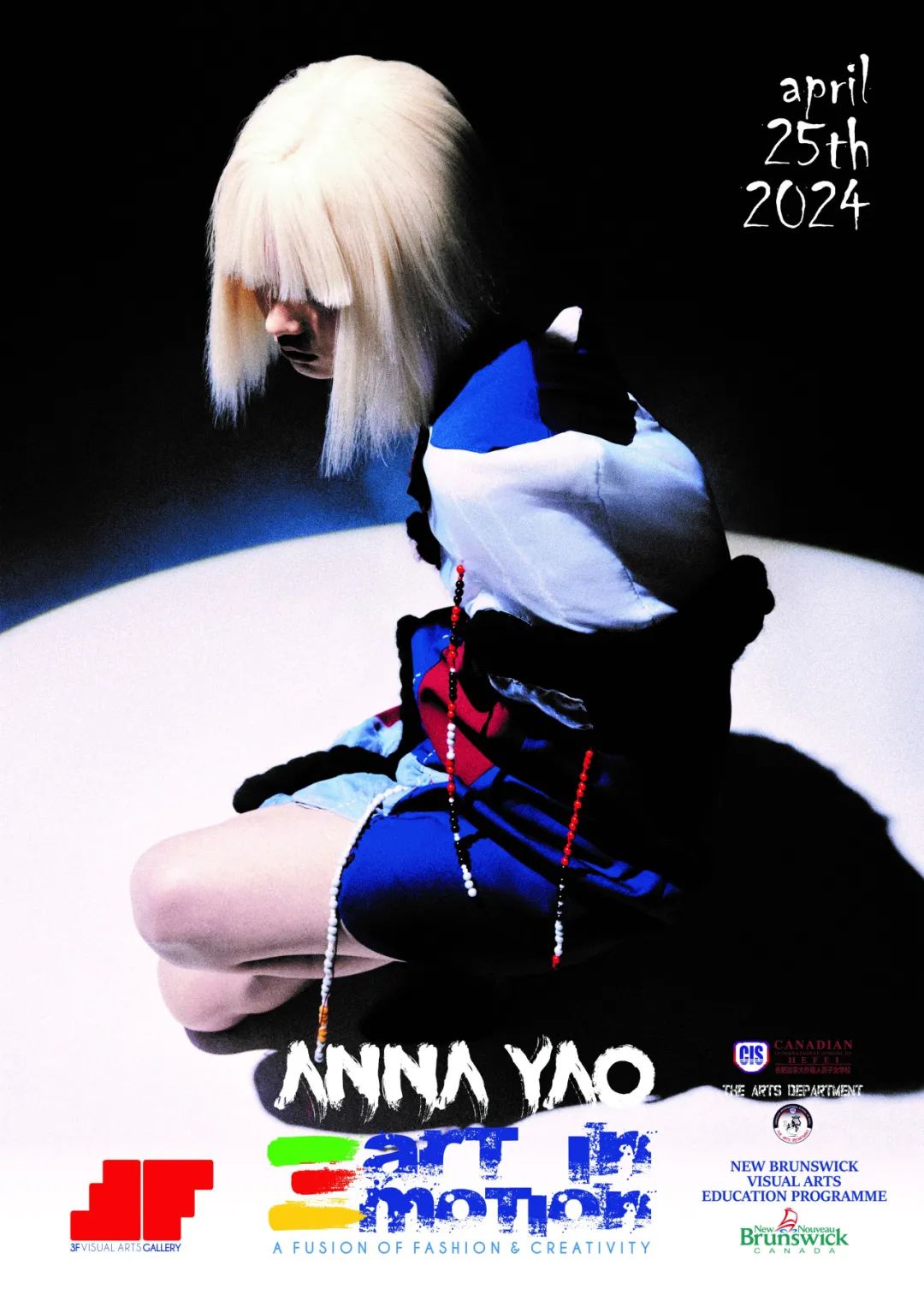
Arts

Music Class
Pre-K (Darren Bayotlang)
PreK - This week's musical highlight with the Pre-K students! Our little learners explored rhythm using percussion instruments, enhancing their abilities to identify different sounds and create their unique beats. We introduced a fun activity called "Beat or No Beat," where the students played along with the music and paused when the music stopped. This simple yet exciting exercise offered a fun way for our young students to explore music.
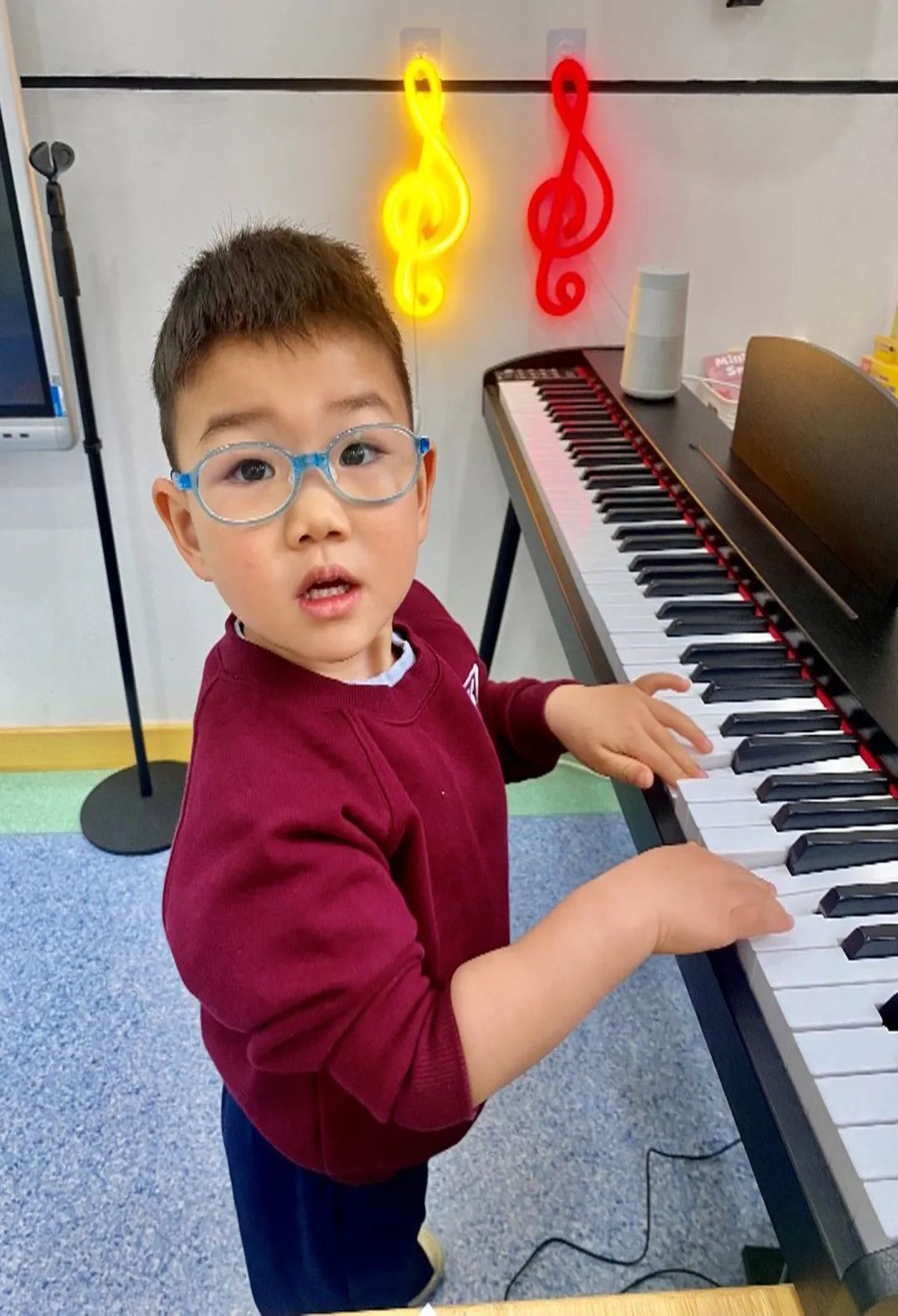

MUSIC CLASS
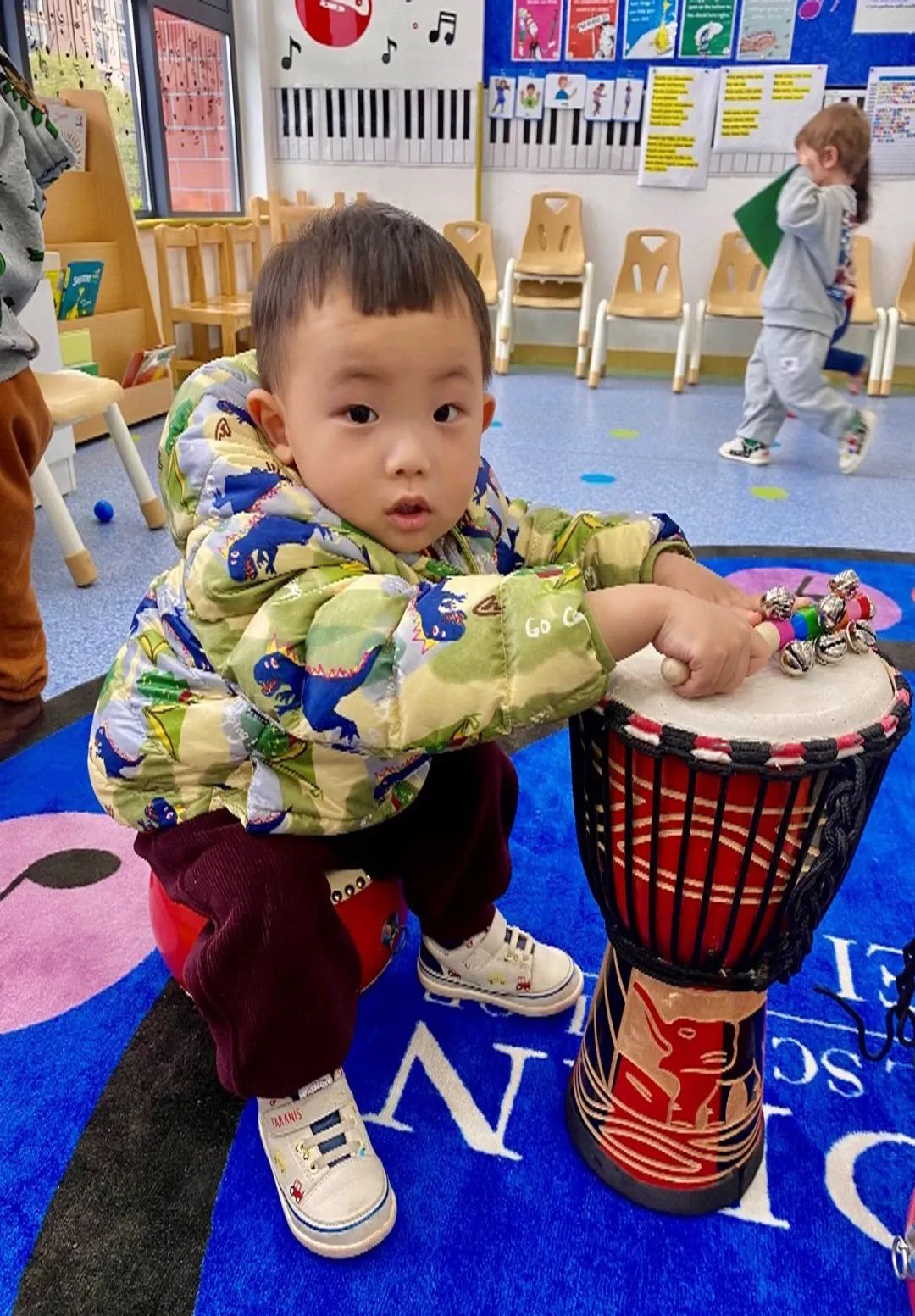
K1 (Darren Bayotlang)
K1-Music class with our K1 students was full of exciting moments. The "Tic Tok Song" was a joyful exploration of beats, rhythm, and coordination, with students playing along on their instruments. The parachute game "Riding a Roller Coaster" was a cooperative activity that enhanced their ability to follow rules while having fun. Well done, K1 students!
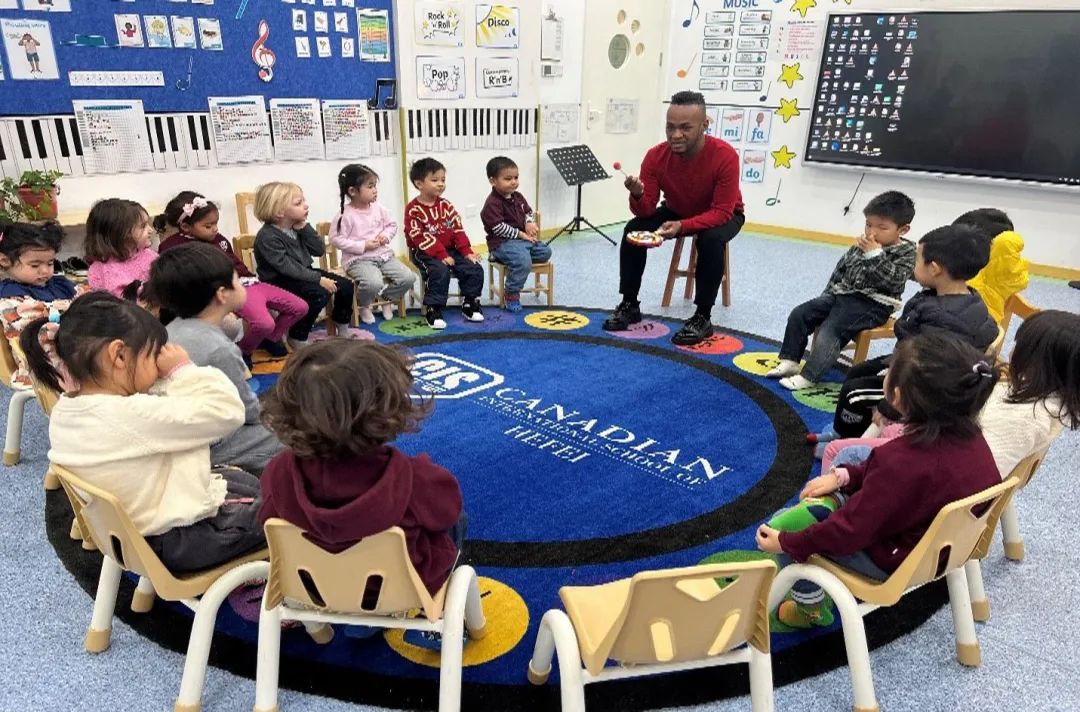
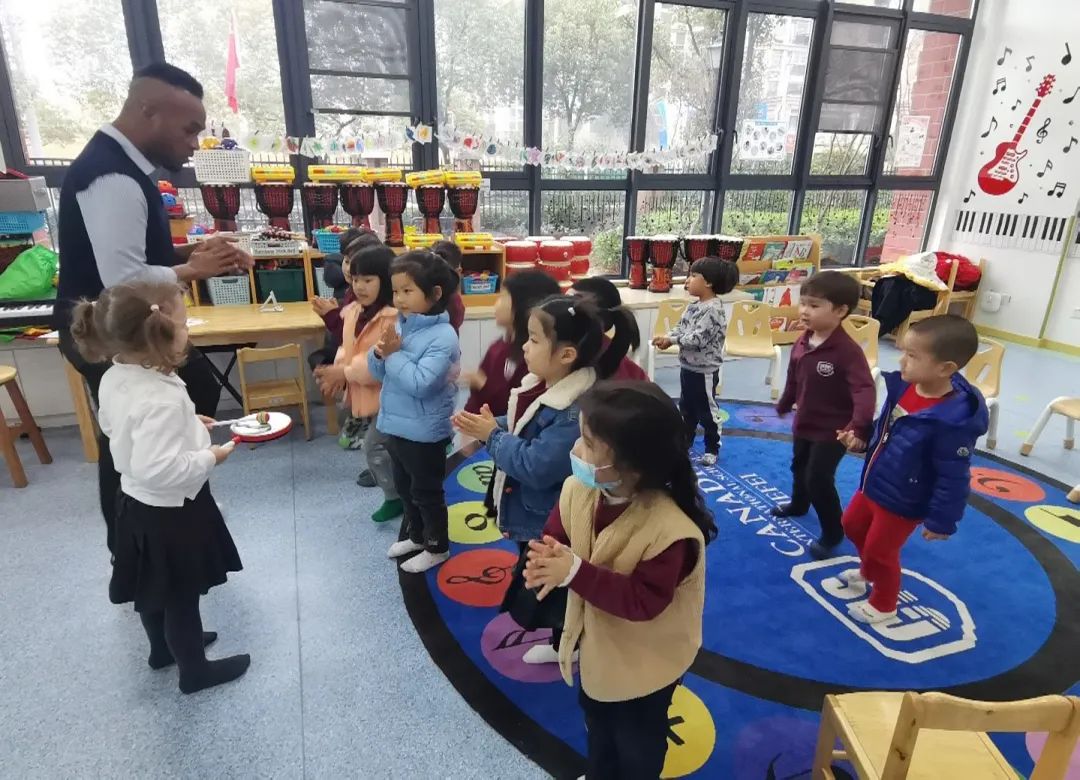
K2 (Darren Bayotlang)
This week’s musical highlight, the K2 students participated in an engaging activity called "Beat or No Beat." This fun exercise helped continue the development of their sense of rhythm as they identified and responded to the rhythm of the “Drum” . Also, students continued exploration of the movement activity "Go Banana." and they are starting to show familiarity and creativity, expressing themselves through unique and imaginative movements.
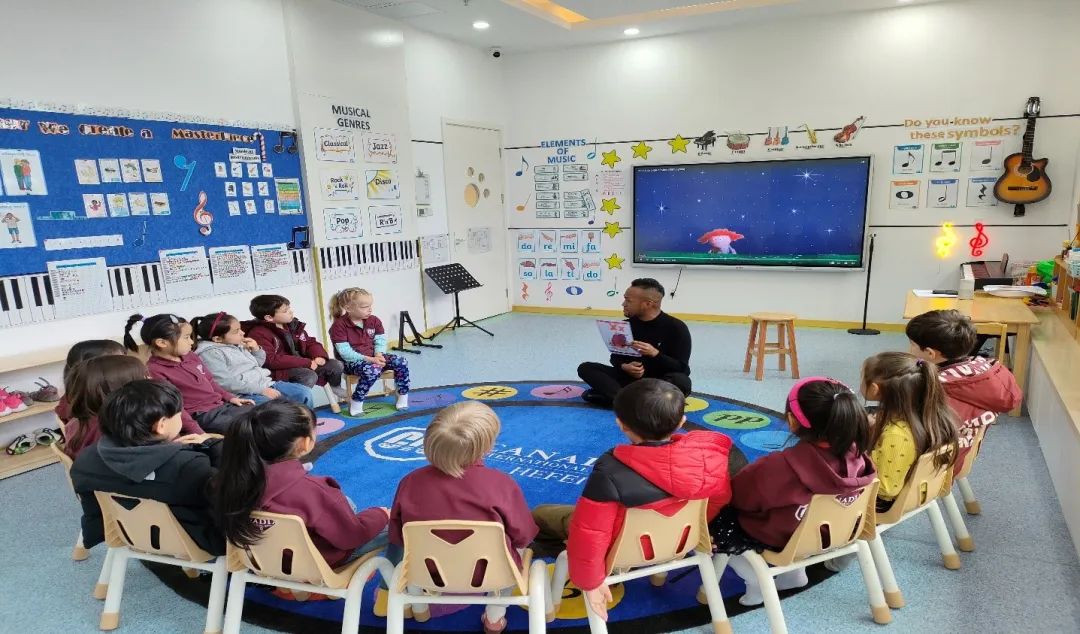
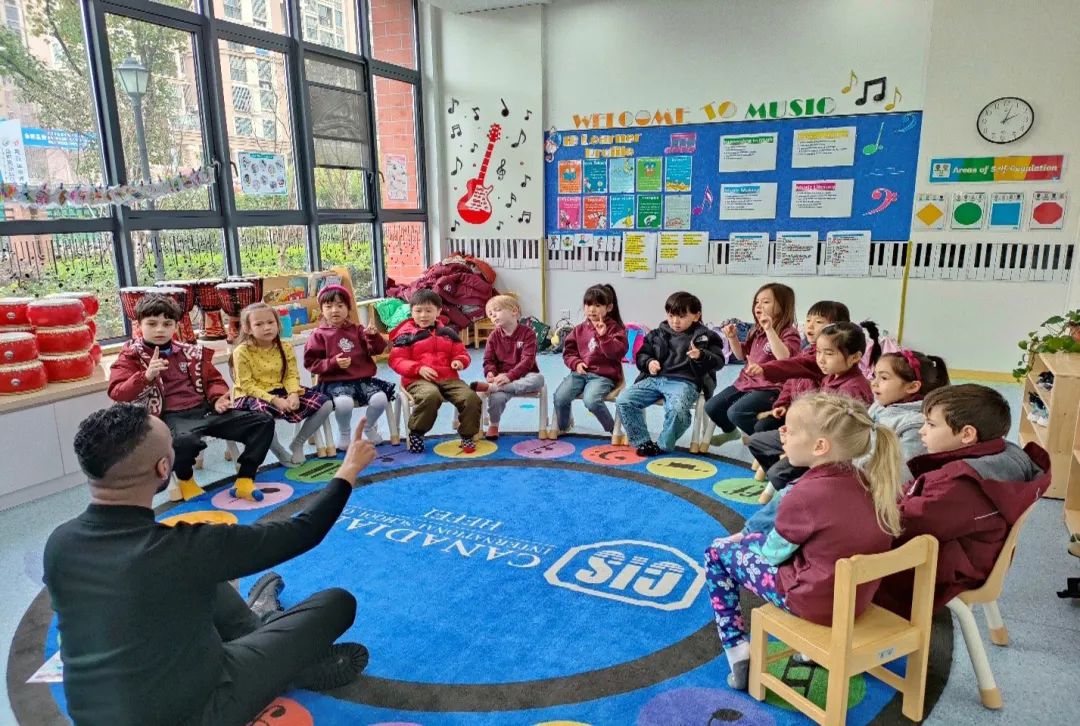
Grade 1 (Snow Boudreau)
G1 dedicated substantial time to vocal practice, focusing on refining techniques and improving vocal range.
Additionally, they delved into learning about the orchestral woodwind family, exploring the different instruments and their unique sounds.
Notable progress was observed in individual vocal performances, indicating a deeper understanding of vocal dynamics and control.
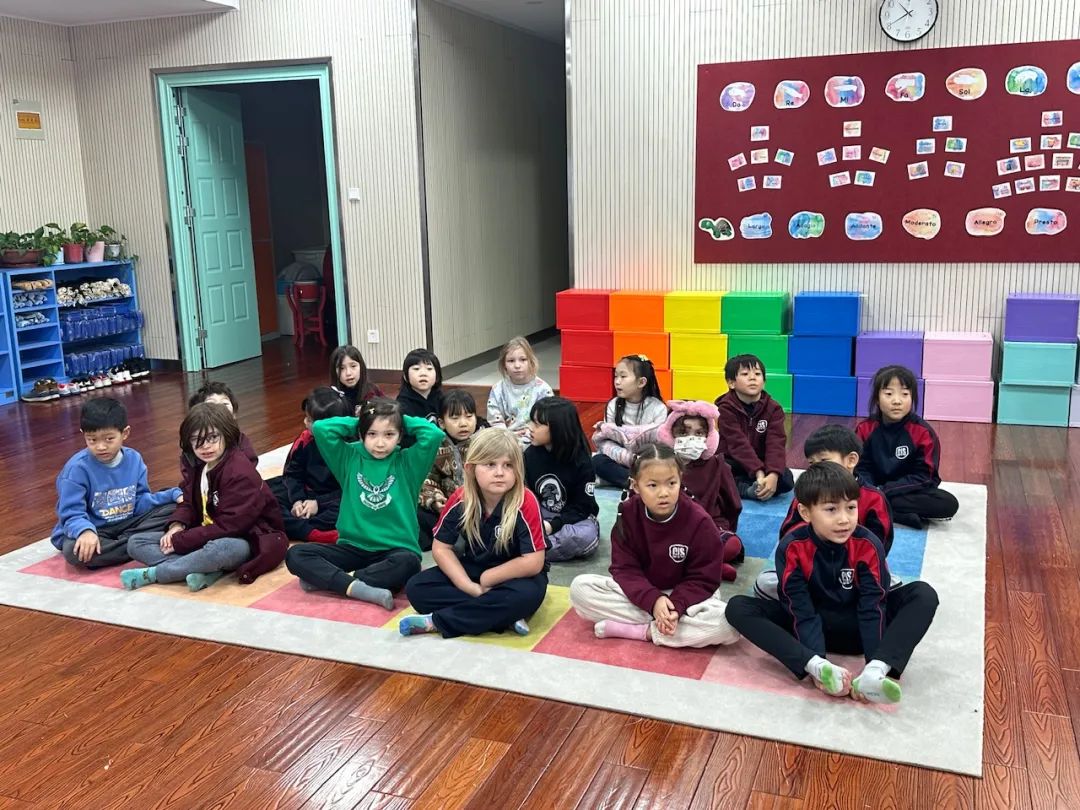
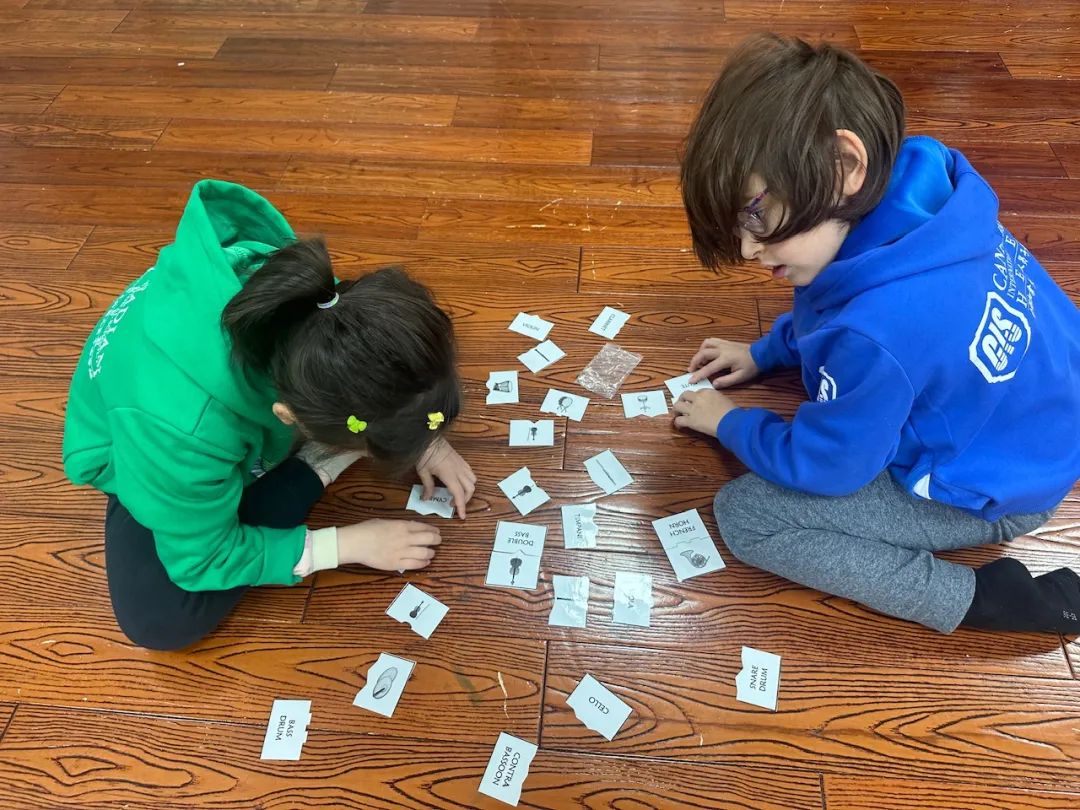
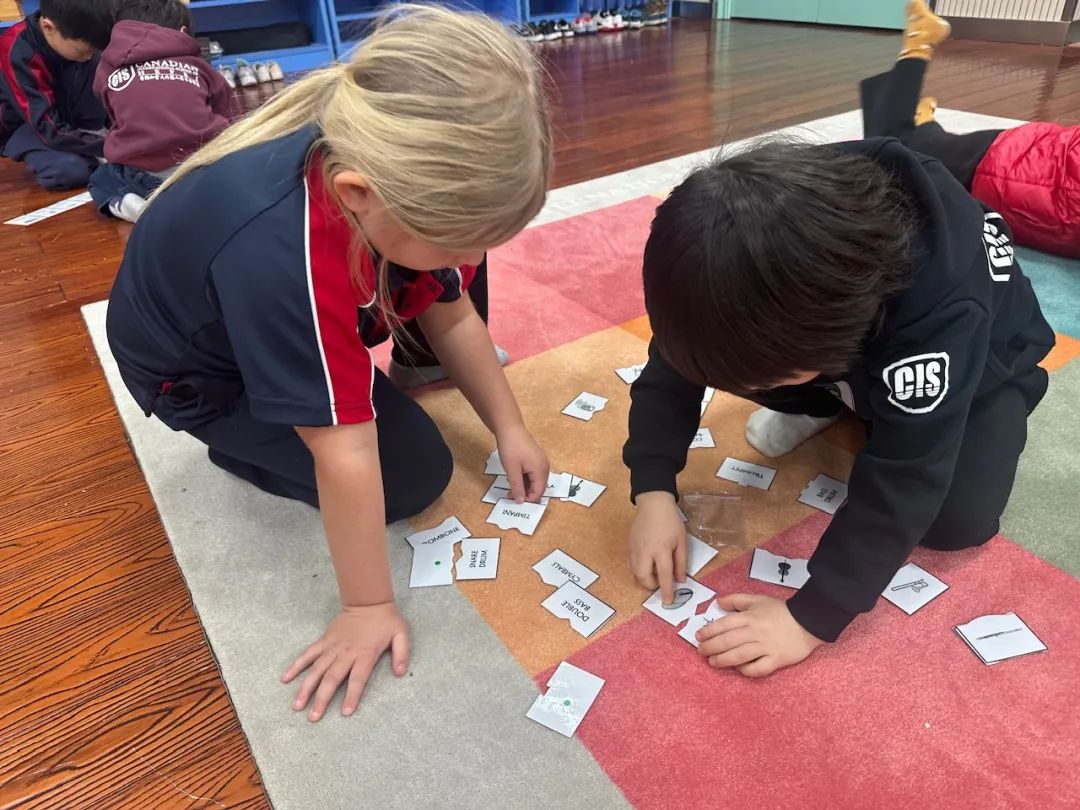
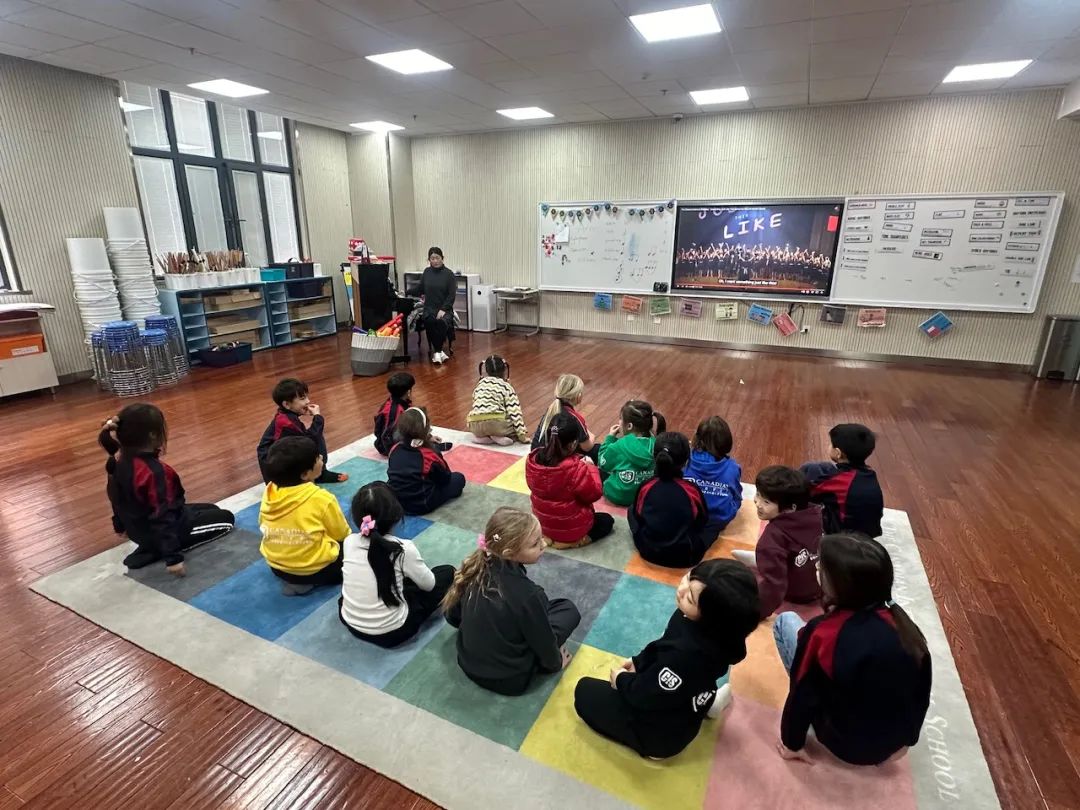
Grade 2 (Snow Boudreau)
G2 diligently engaged in vocal practice sessions, aiming to enhance their singing skills and vocal range.
The group delved into the orchestral woodwind family, studying the characteristics and sounds of various woodwind instruments.
Members showed enthusiasm in learning the song "Believer", dedicating time to practice and refine their performance.
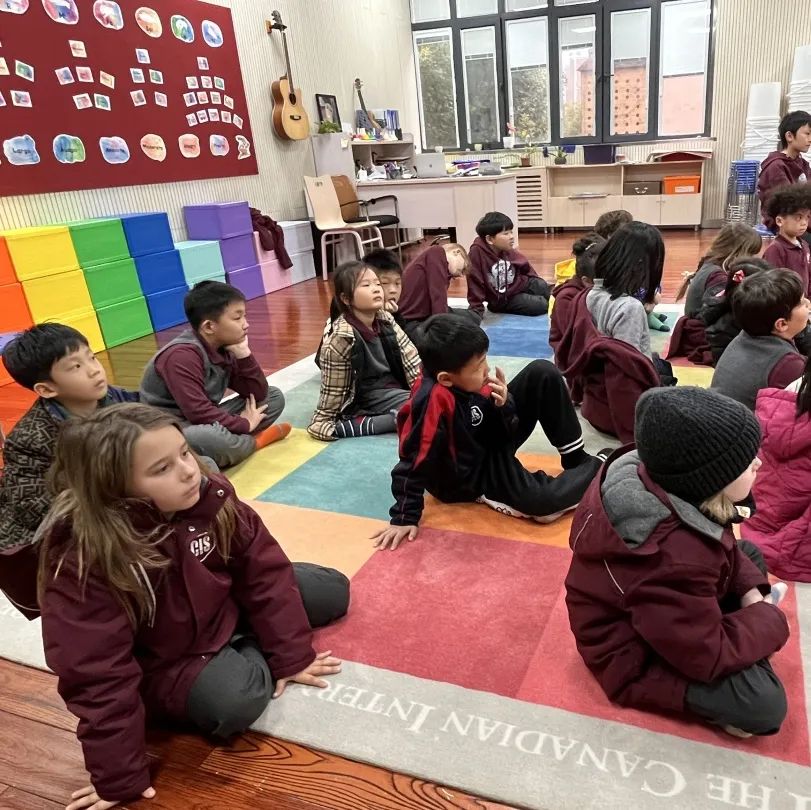
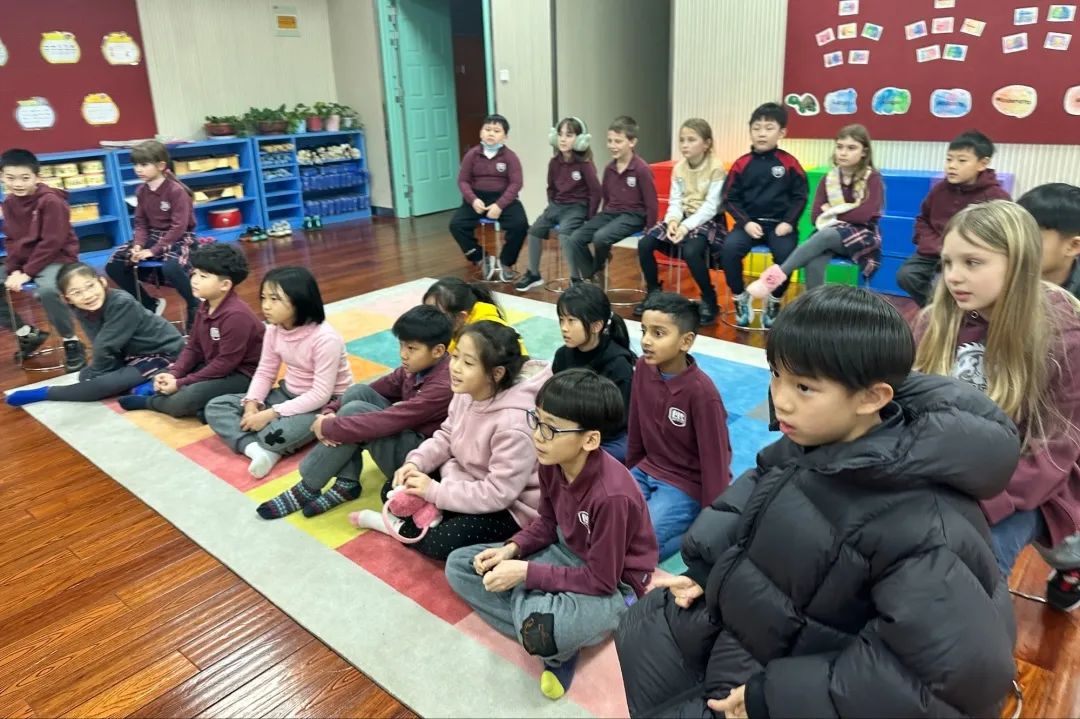
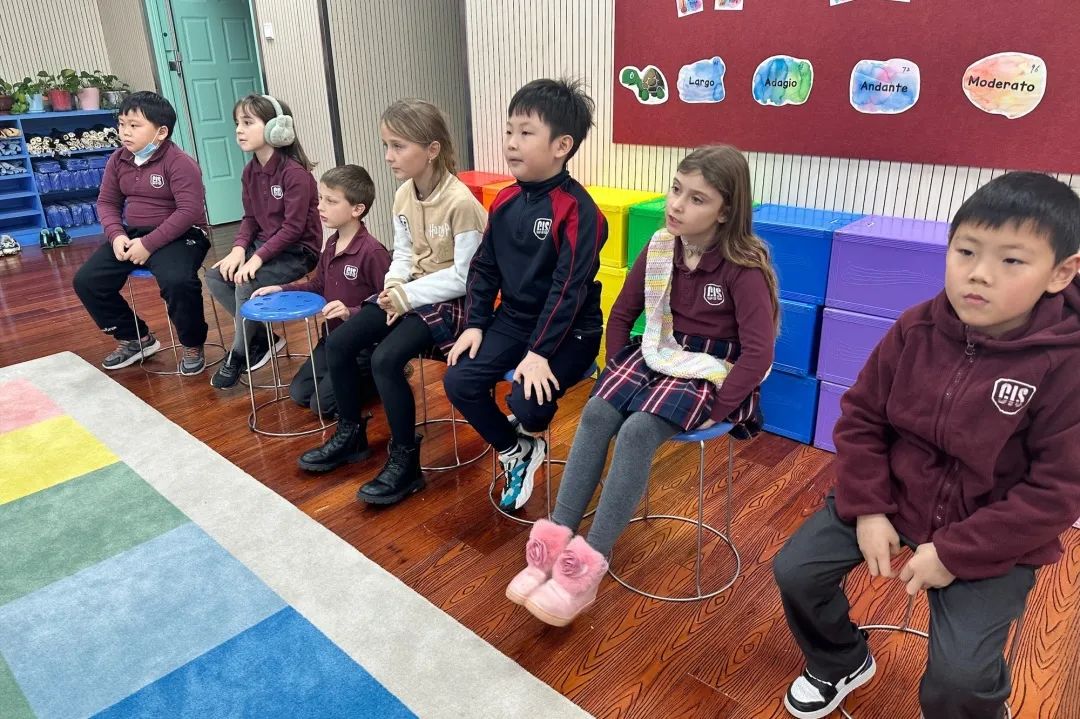
Grade 3 (Snow Boudreau)
G3 continued their vocal training regimen, focusing on perfecting renditions of songs and improving stage presence.
Members engaged in practicing for the talent show, preparing to showcase their vocal abilities in front of their peers.
The group exhibited enthusiasm and commitment to refining their performances, aiming to impress during the upcoming event.
Grade 4 (Snow Boudreau)
G4 took center stage this week, participating in the talent show where they confidently showcased their talents.
The event provided a platform for members to build confidence in performing in front of an audience, fostering a supportive and encouraging atmosphere.
Participants displayed remarkable courage and skill, illustrating growth in their ability to perform under pressure.
Grade 5 (Snow Boudreau)
G5 immersed themselves in learning about various composers, gaining insight into their musical contributions and legacies.
As a group project, they collaborated on creating posters highlighting their favorite composer, fostering teamwork and creativity.
The activity encouraged exploration and appreciation of diverse musical styles and historical contexts.
Slide pictures to see more
Grade 6 (Jose Correia)
It's working the unit "Formal Elements of Music," The fundamental building blocks of music are loudness, pitch, duration (or rhythm), tempo, timbre, and reverberation. When combined carefully, they give rise to higher-level concepts such as meter, harmony, melody, and key. Thus, music differs from random sound in the combination of its basic elements and the relations that form between them. Let’s briefly define them.
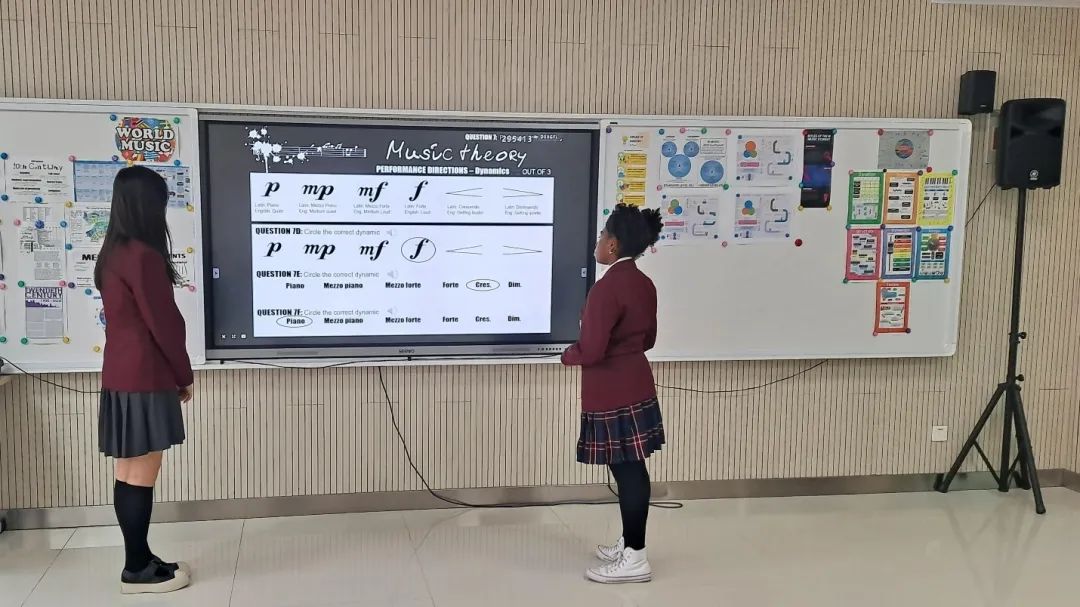
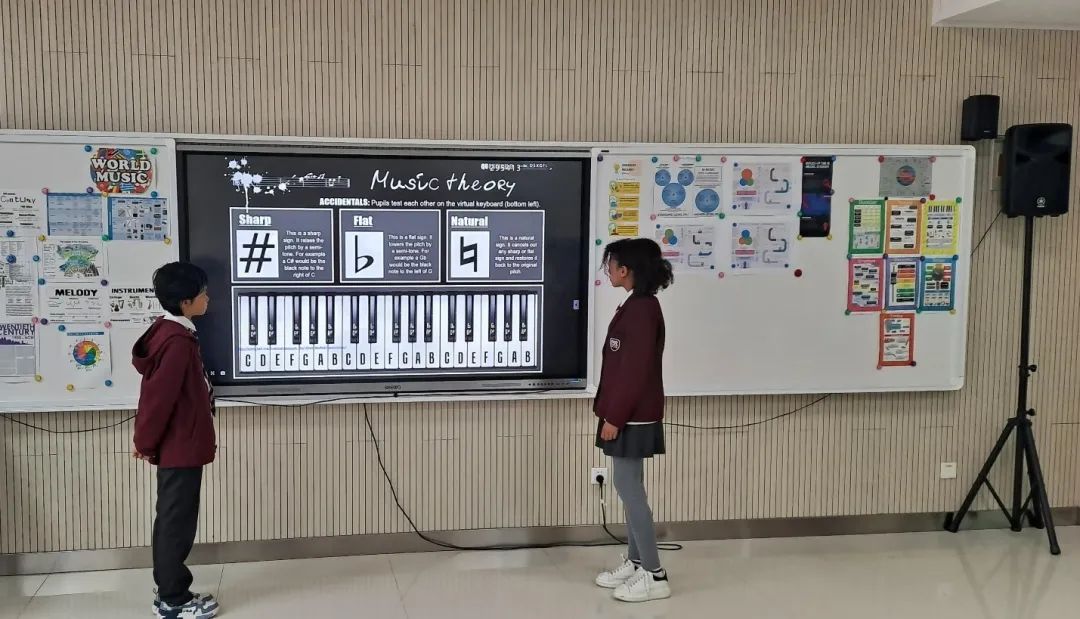
Grade 7 (Jose Correia)
Percussion instruments are found on every continent and in nearly every society around the world. Percussive traditions have shaped cultures and communities. Many percussion instruments in various countries are related, and therefore, musical evolution can be partially traced back through the instruments themselves and their cultural contexts. Communities are groups that exist in proximity defined by space, time or relationship. Communities include, for example, groups of people sharing particular characteristics, beliefs or values as well as groups of interdependent organisms living together in a specific habitat. Students will work on musical concepts as a large group and then will work on the concepts in solo and small groups. Students will be asked to demonstrate their musical skills by demonstrating thinking skills, communication skills, self-management and research skills.
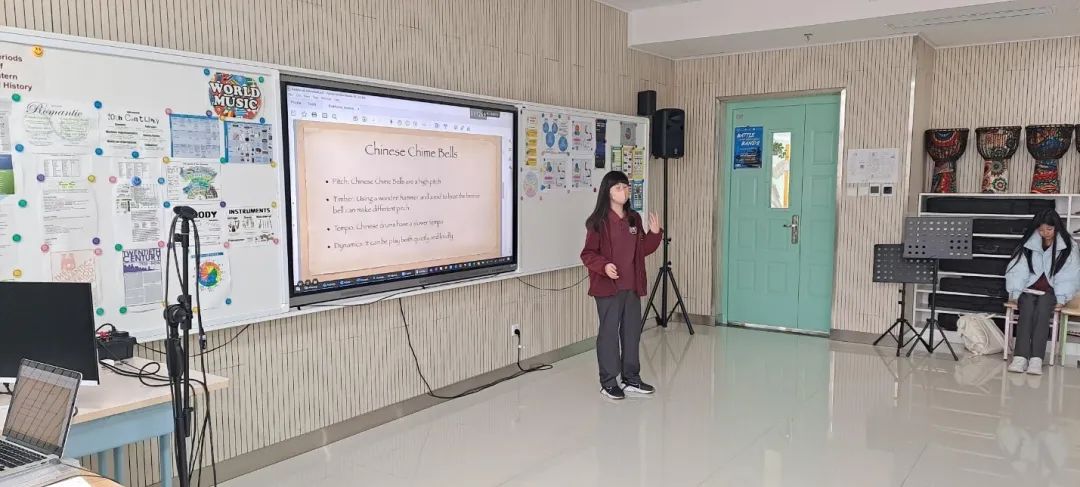
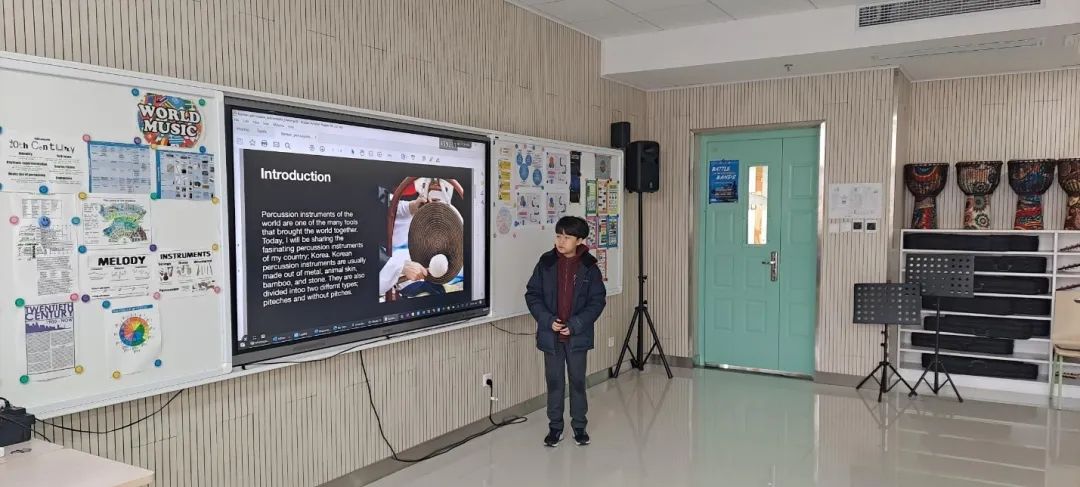
Grade 8 (Jose Correia)
The grade 8 worked on body percussion with harmony, in which they had to compose a harmonic sequence with melody, snapping fingers, clapping, chest, legs and vocal sounds, now they started to prepare a comedy performance.
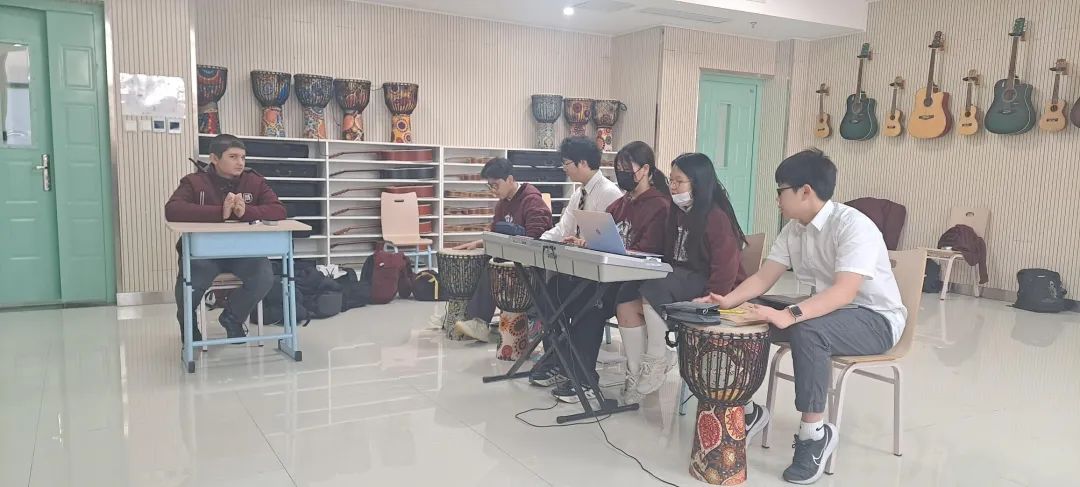
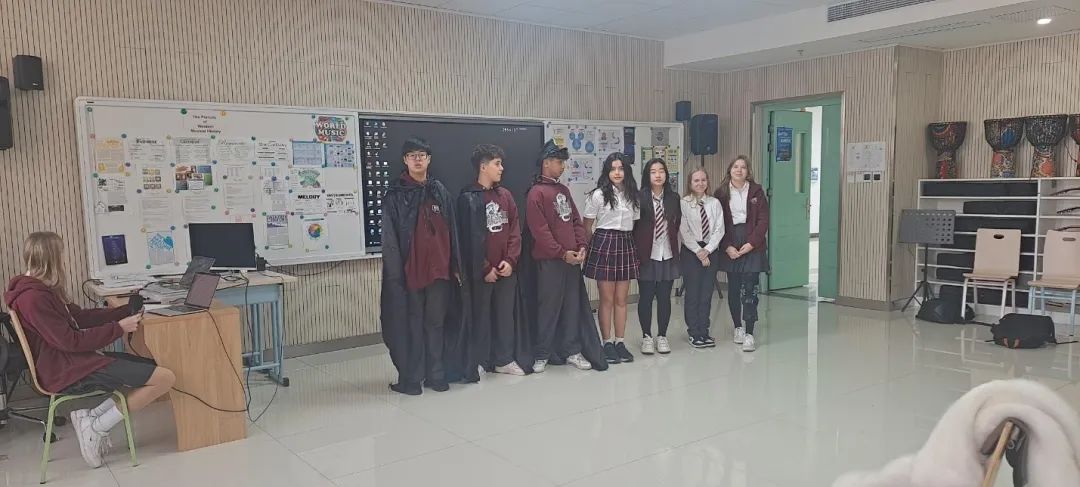
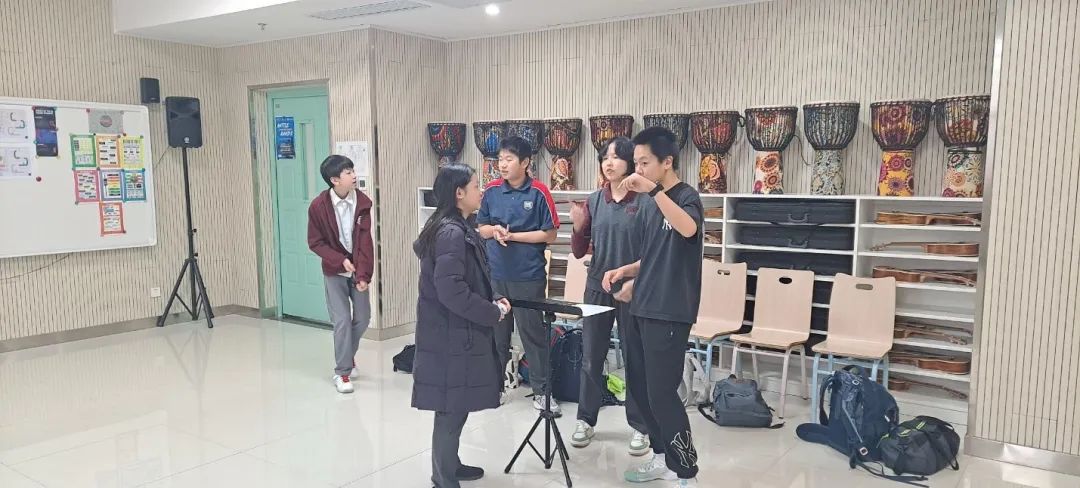
Grade 10 (Jose Correia)
They are working in the IB Areas of Inquiry (World Music for sociocultural and political expression, listening and performance, dramatic impact, movement and entertainment, technology in the electronic and digital age, Now they are working on musical sampling composition of a piece for performance.
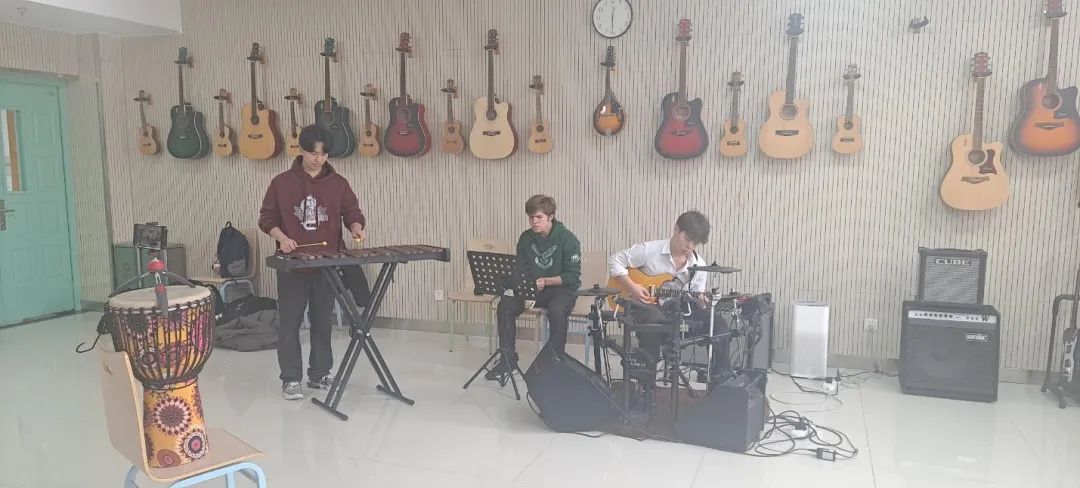
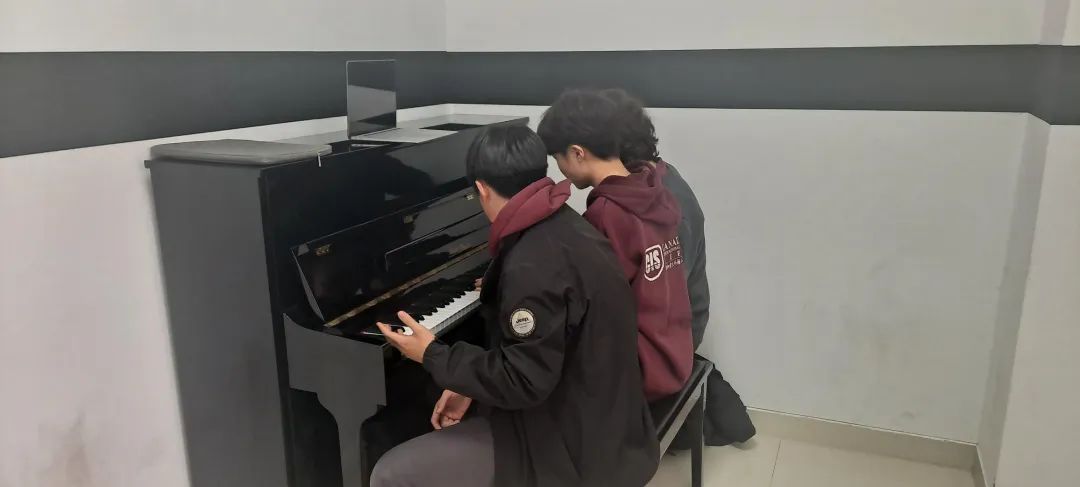
Drama Class
Grade 9 (Jonny Turvey)
This week in Grade 9 Drama, students progressed in their Commedia Dell'Arte unit by embarking on a project titled "Sleepless in Siena." During this phase, they were tasked with choosing one of the five acts from the scenario to develop into a full script. This initiative is designed to foster creativity and teamwork, as each group's efforts will eventually lead to a culminating performance, showcasing their understanding and application of the Commedia Dell'Arte's distinctive storytelling and character archetypes.
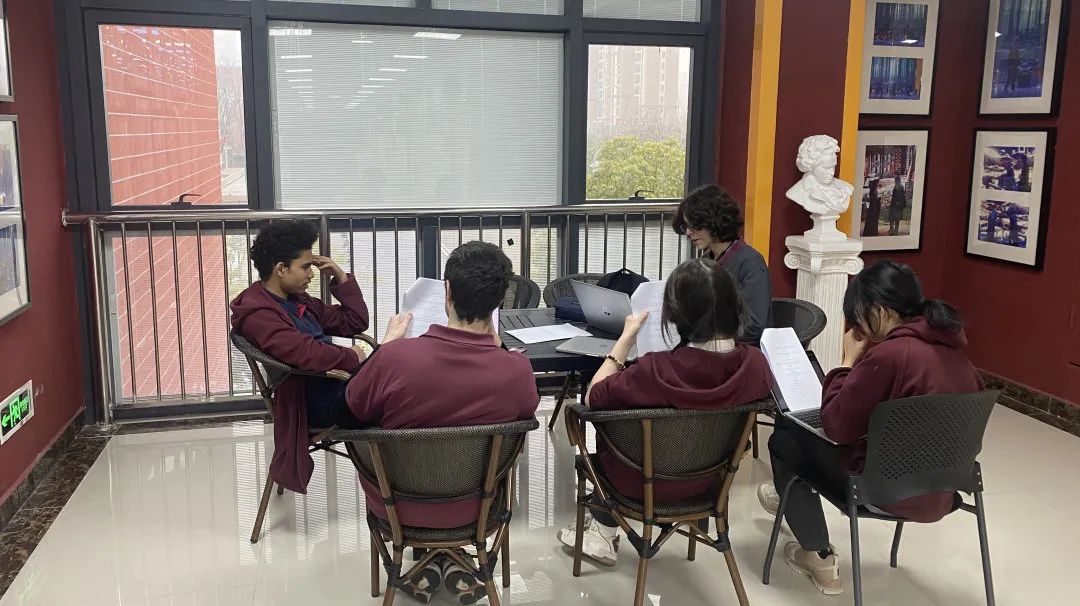
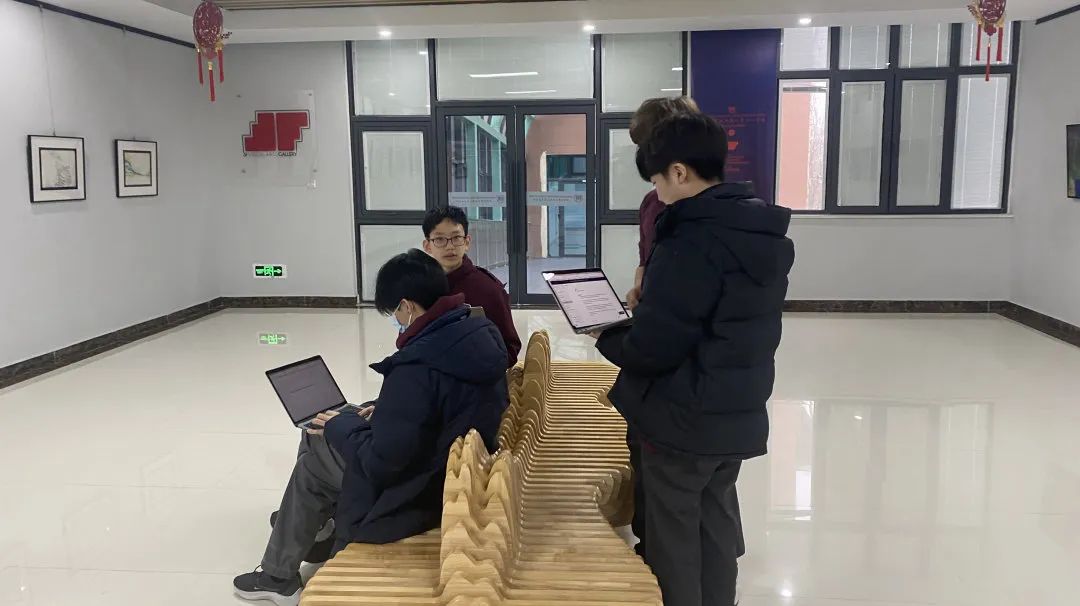
Grade 10 (Jonny Turvey)
This week, Grade 10 Drama students made significant progress on their group projects, focusing on creative adaptations of iconic stories including "Titanic," "Catch Me If You Can," "Hansel and Gretel," and a contemporary version of the Persephone myth. Having completed their scripts, the students have moved on to conducting read-throughs to refine dialogue, pacing, and character development. This preparatory stage is critical for ensuring that full rehearsals, slated to begin next week, proceed smoothly, enabling students to bring these varied narratives to life on stage with depth and nuance.
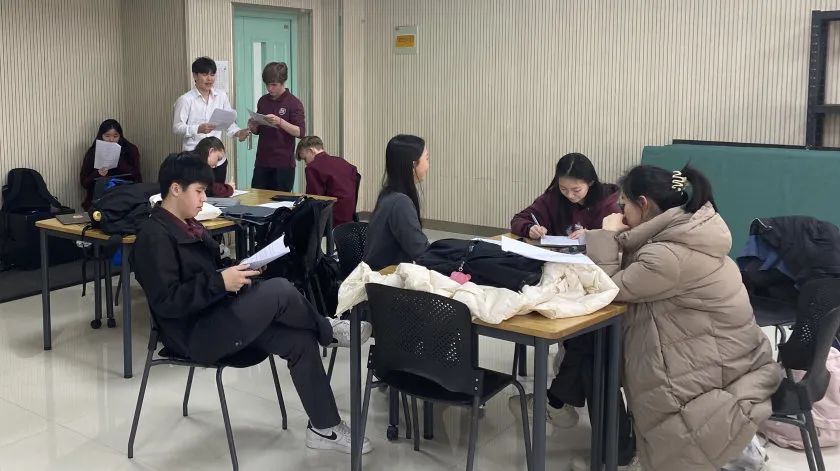
Language A Highlights
CISH
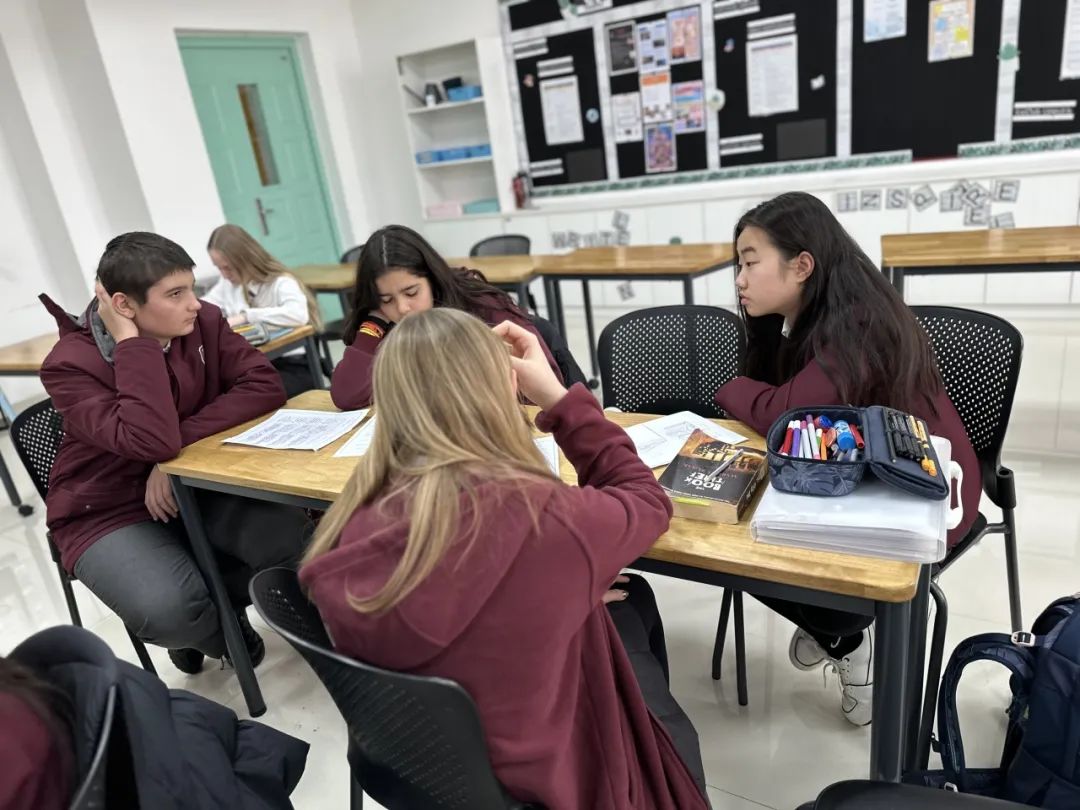
G6 (Mr. Ryan Stienberg)
During this week, the grade 6s continued to read the novel 'Holes'. To further engage with the novel, theywere required to write summaries, analyze the major themes of each chapter, and establish connections.Furthermore, and in order to better connect to the characters, they did activities that allowed them toexplore the mindset and situation of the character. The grade 6s ended the week by meeting with theirliteracy group to discuss the novel and the diverse elements of it.
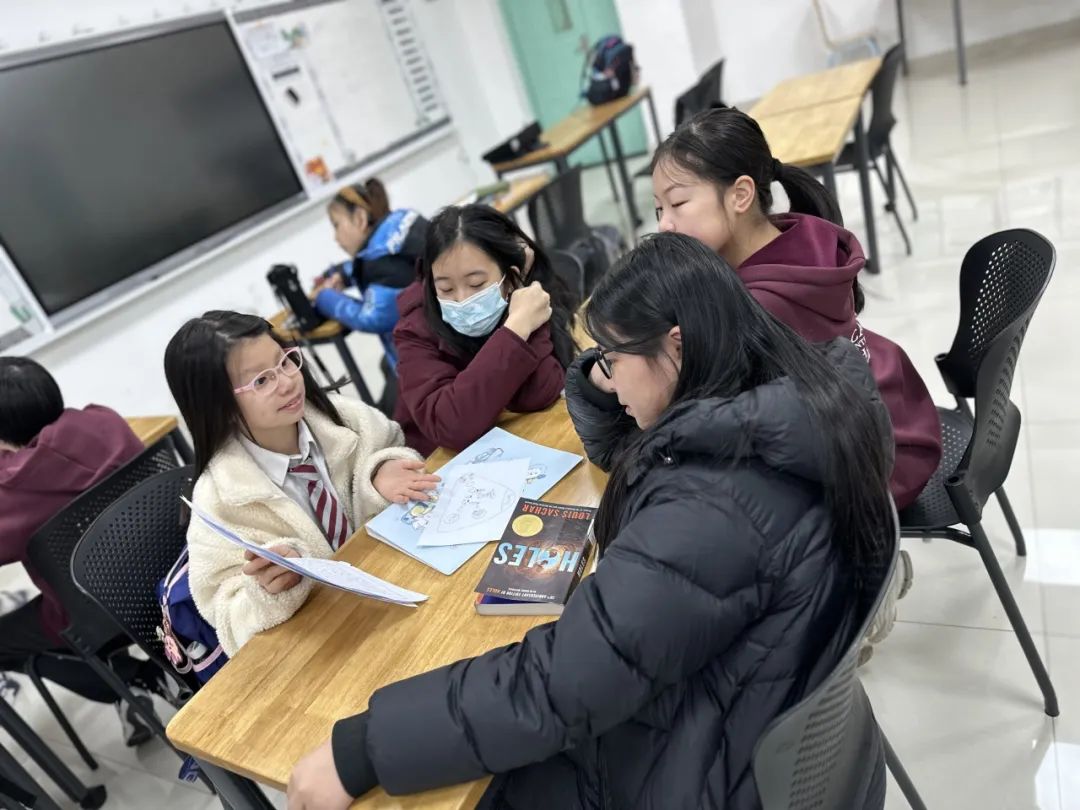

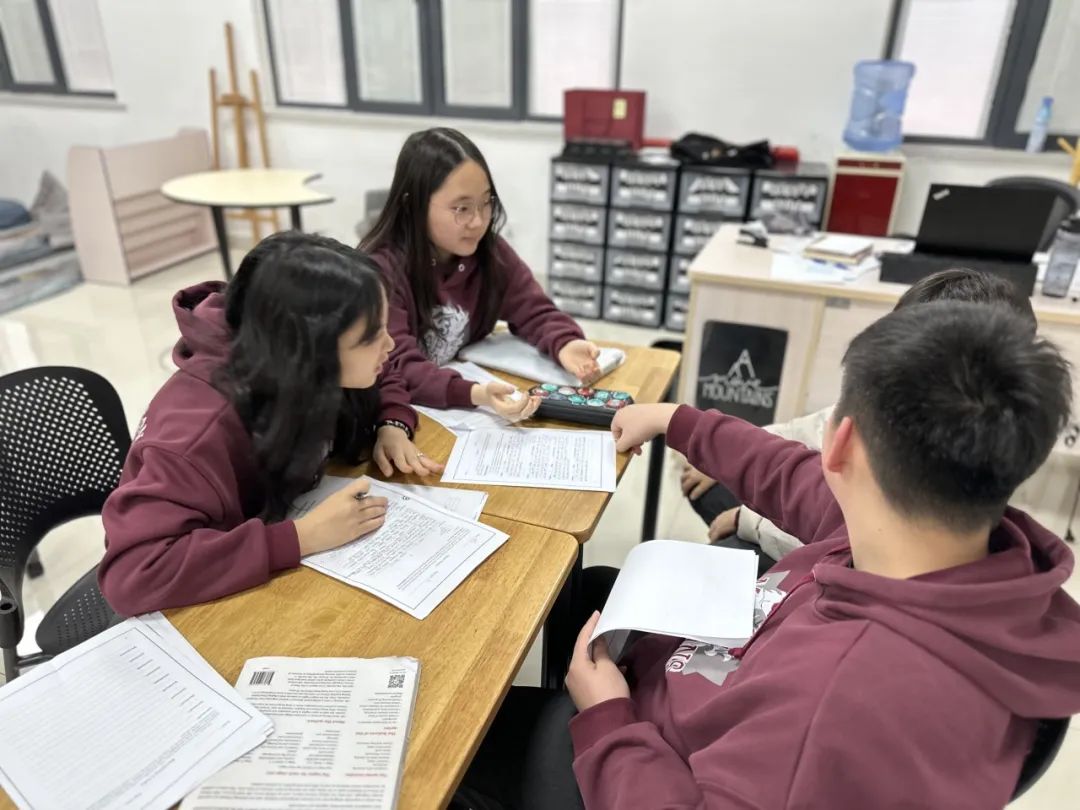
G7 (Mr. Ryan Stienberg)
During this week, the grade 7s continued to read the novel 'Divergent'. To further engage with the novel,they were required to write summaries, analyze the major themes of each chapter, and establishconnections. Furthermore, and in order to better connect with the novel, they did activities that allowedthem to explore plot choices and predict the reasoning for those choices. The grade 7s ended the weekby meeting with their literacy group to discuss the novel and the diverse elements of it.
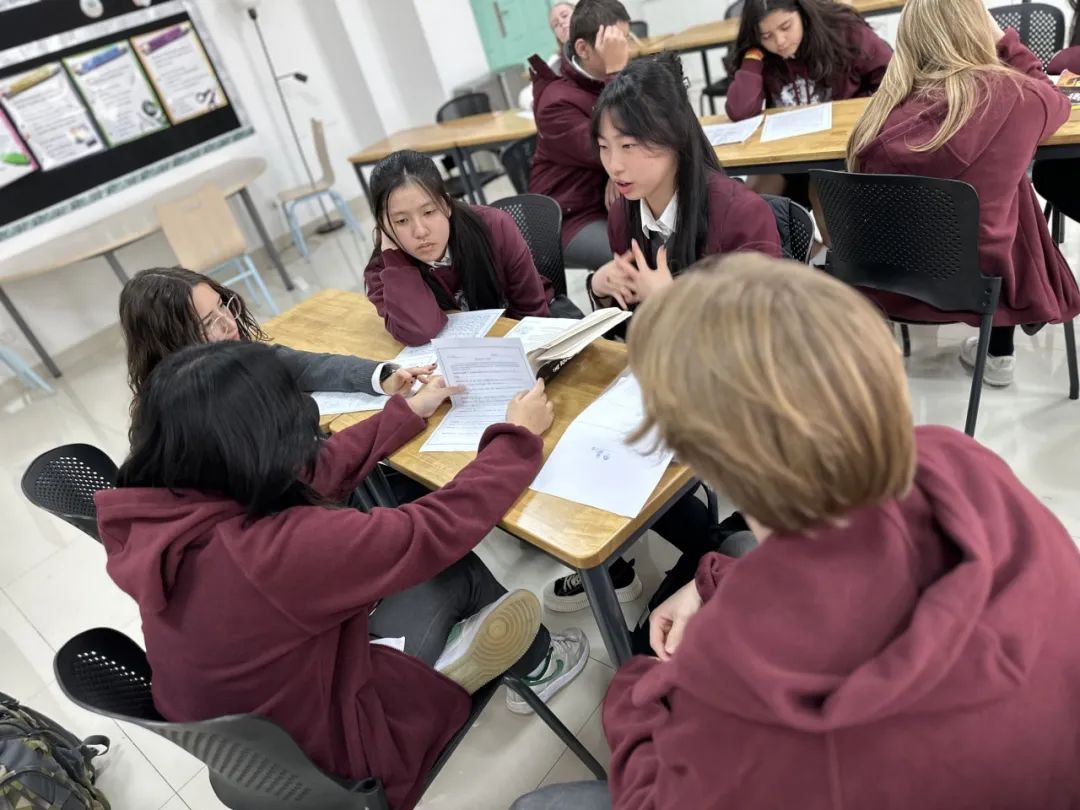


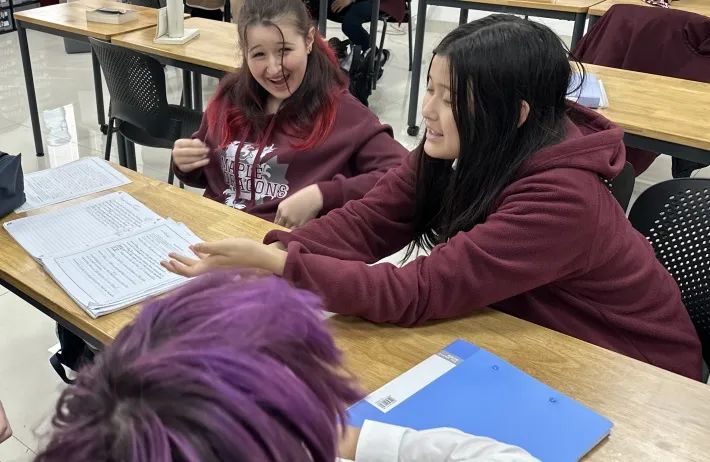
G8 (Mr. Ryan Stienberg)
During this week, the grade 8s continued to read the novel 'The Book Thief'. To further engage with thenovel, they were required to write summaries, analyze the major themes of each chapter, and establishconnections. Furthermore, and in order to better connect to the story and characters, learners exploredthe real world situations that are spoken about in the novel and did activities that allowed them tounderstand the mindset and situation of the characters. The grade 8s ended the week by meeting withtheir literacy group to discuss the novel and the diverse elements of it.
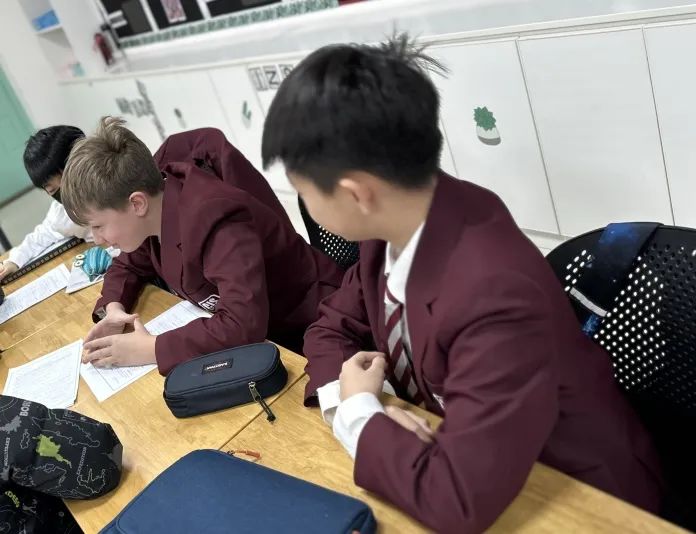
G9 (Mr. Ryan Stienberg and Mr. Turvey)
During this week, the grade 9s continued to read the novel 'The Catcher in the Rye'. To further engagewith the novel, they were required to write summaries, analyze the major themes of each chapter, andestablish connections. Furthermore, and in order to better connect to the main character, learners didactivities that allowed them to explore and understand the growth, mindset and situation of the character.The grade 9s ended the week by meeting with their literacy group to discuss the novel and the diverseelements of it.
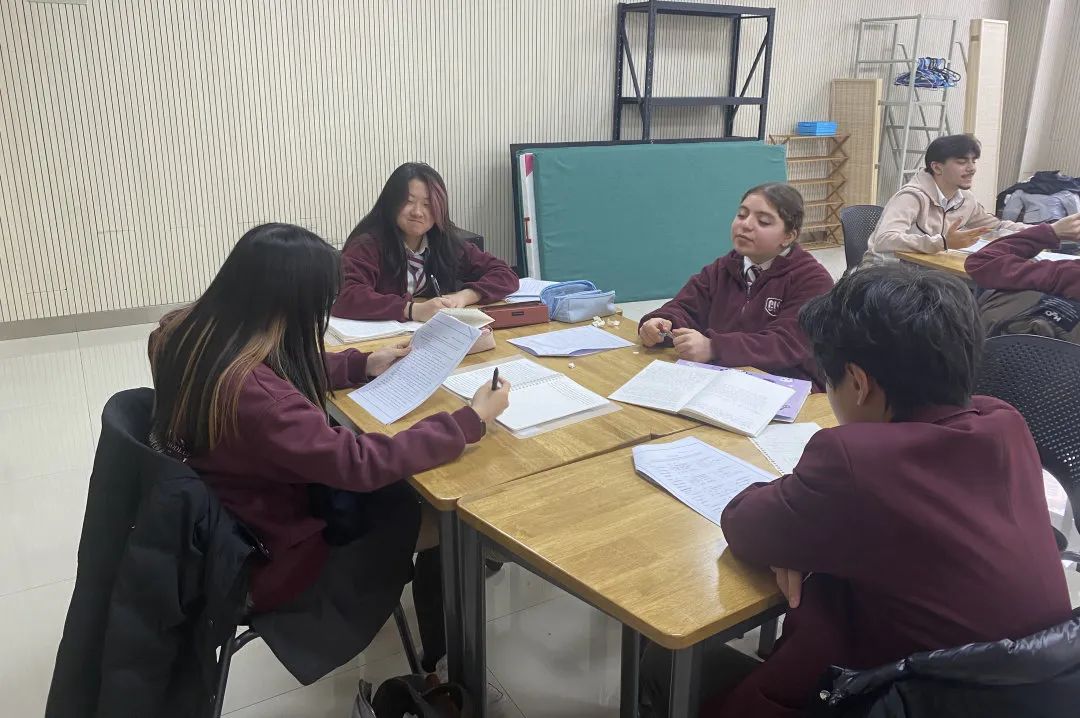
G10 (Mr. Miller and Mr. Turnbull)
This week, students in grade 10 English Language and Literature started the week by visiting the TOKexhibition. This was a great opportunity for them to learn from the grade 12 students and gain experiencein the subject of TOK which they will be taking next year when they start the Diploma Program. Studentsalso had some extra time to finish their Foley film assignment. The class had a Foley Film Festival whereeach group of students showed a movie clip where they had changed the sound to transform a dramatic scene into a comedic scene. The class learned how to use the editing software, DaVinci Resolve whichwill allow them to create their own films. On Friday, students participated in book talks and continued todevelop their editing skills.
Grade 11 (Mr. Turnbull)
The class started the week by reading three different examples of a Paper #1 response. Students didtheir best to use the rubric to assess each criteria. This activity gave students more insight into thestandards and expectations for the Paper #1 exam. The class learned about another non-literary text typewhich was a set of instructions. They learned about the conventions of the text type and used theircreative writing skills to create their own. On Wednesday, Higher Level students had their first student-ledseminar that examined I Know Why a Caged Bird Sings through the lens of race, inequality and identity.On Friday, students continued their study of Kendrick Lamar by reviewing the previous poem and usingthe jigsaw method to establish the meaning of the second poem in the series.
G12 (Mr. Turnbull)
The grade 12 students spent this week preparing for their Individual Oral Assessments. Students willrecord their IOs next week. Each student met with Mr. Turnbull to respond to several questions anddiscuss their progress. On Friday, students participated in a peer and self-evaluation assignment wherethey presented their entire IO to a peer.
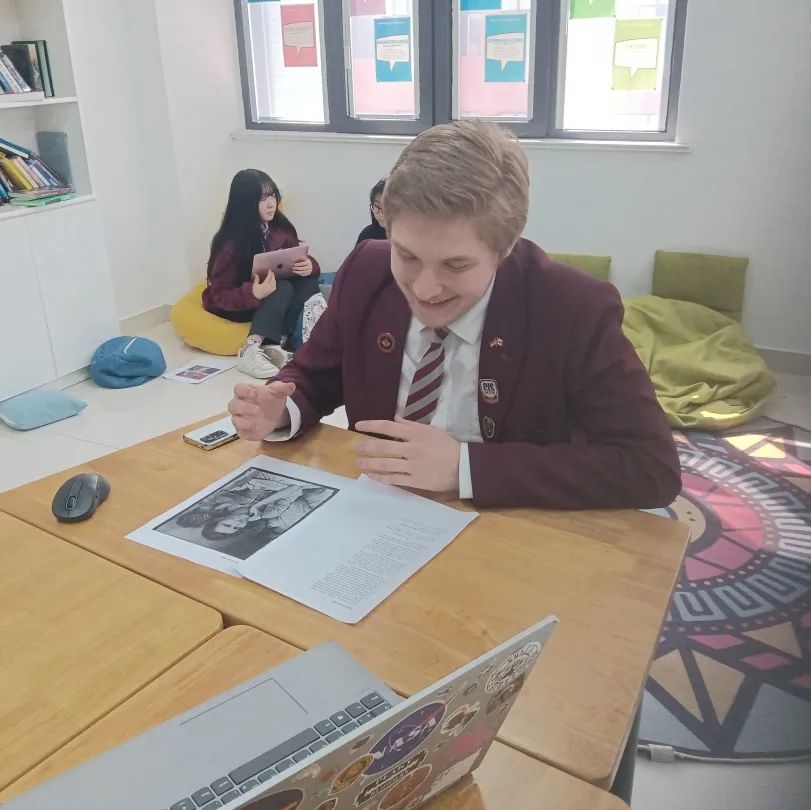
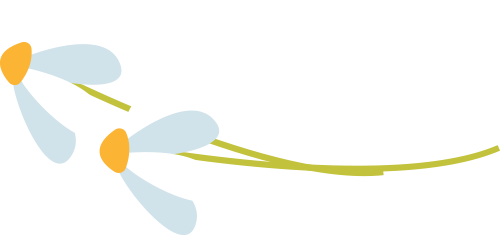
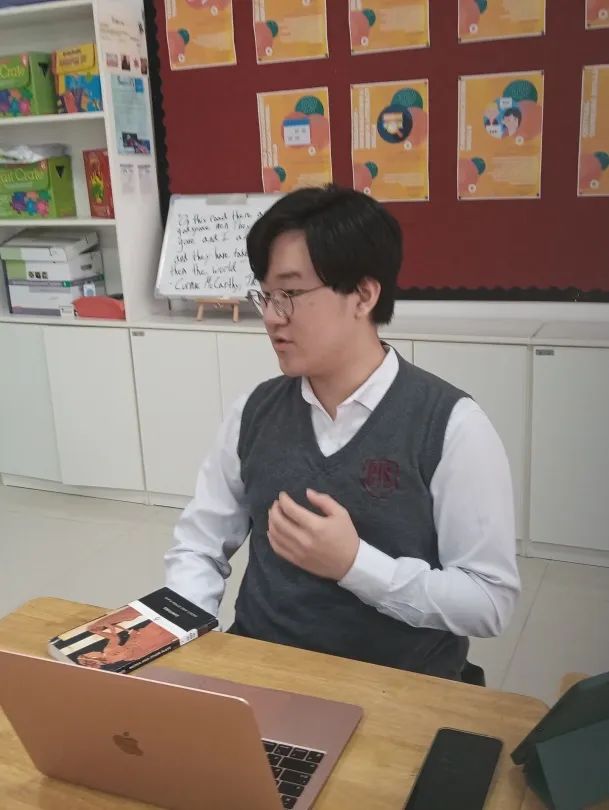

German Class
G6 (Mr. Robert Jordan)
This week we concentrated on strategies for correct spelling, finding synonyms and their differentmeaning, nuance and connotation. We also worked on reading and analyzing different kinds of stories ortales with fairy tale elements and compared them to what presumably actually happened.
G7 (Mr. Robert Jordan)
We were working with diagrams about age related differences in media usage and discussed severalmedia related topics including differences between cartoonish classics and real life remakes. We alsodiscussed the individual use of media, violence in computer games with its results in real life and workedon how to write in a journalistic way including audience-focussed writing and recognizing humorousauthor intentions, rewriting some passages.
G8 (Mr. Sebastian Adler)
Students immersed themselves in the exploration of poetic themes and symbolism. Theydelved into the universal themes of love, nature, and relationships, analyzing how poets use thesethemes to convey deeper meanings and emotions. Through discussions and creative writing exercises,students honed their skills in identifying and interpreting symbolism in poetry. The week culminated in areflective project where students analyzed poems, showcasing their understanding of themes andsymbolism while reflecting on their personal growth as poetry enthusiasts.
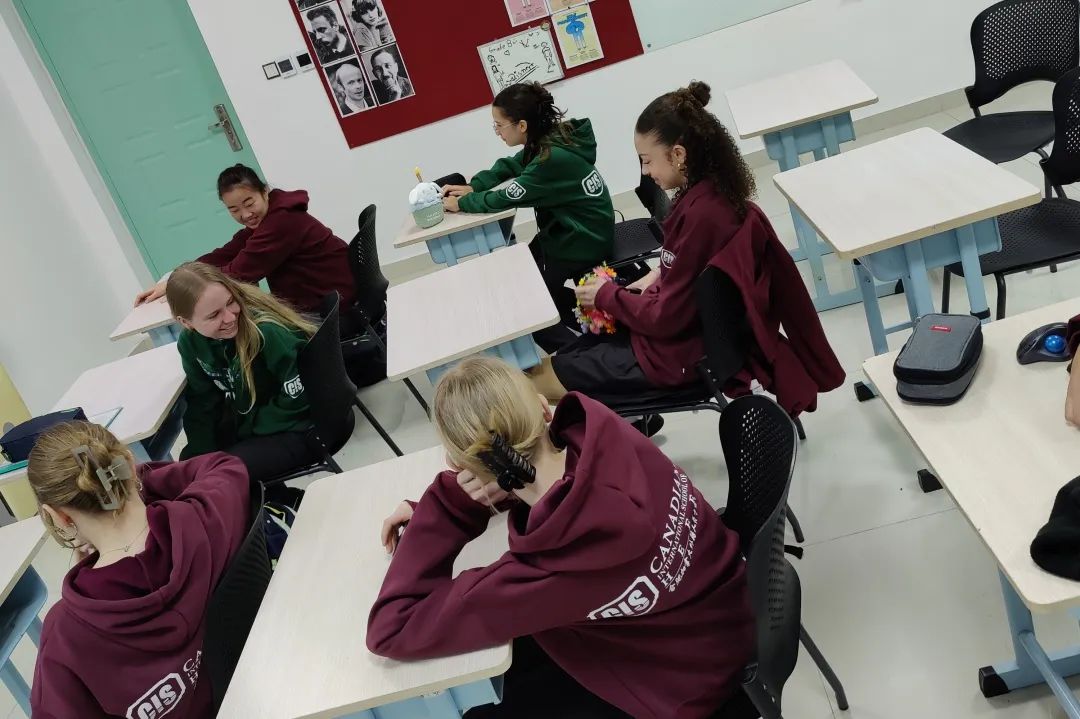
G9 (Mr. Robert Jordan)
This week we continued to work on reading and analyzing texts, especially from Jan de Leeuw and wewere writing a character characterization, also writing a pseudo-archeological story including the students'own imagination. The students discussed topics like the situation in WW2 in belgium. We worked on theshort story Streuselschnecke, which we read and interpreted (narrative perspective, wording, exactreading, questions to the text etc).
G10 (Mr. Sebastian Adler)
In Week 3, students delved into German social media, cultural nuances in online communication, and theinfluence of social media influencers. They honed their writing skills for social media posts in German andcollaborated on a project applying their knowledge. Through research, analysis, and practical exercises,students gained insights into online communication dynamics and the role of social media in shapingidentities. This week's activities fostered teamwork, creativity, and a deeper understanding of the digitallandscape.
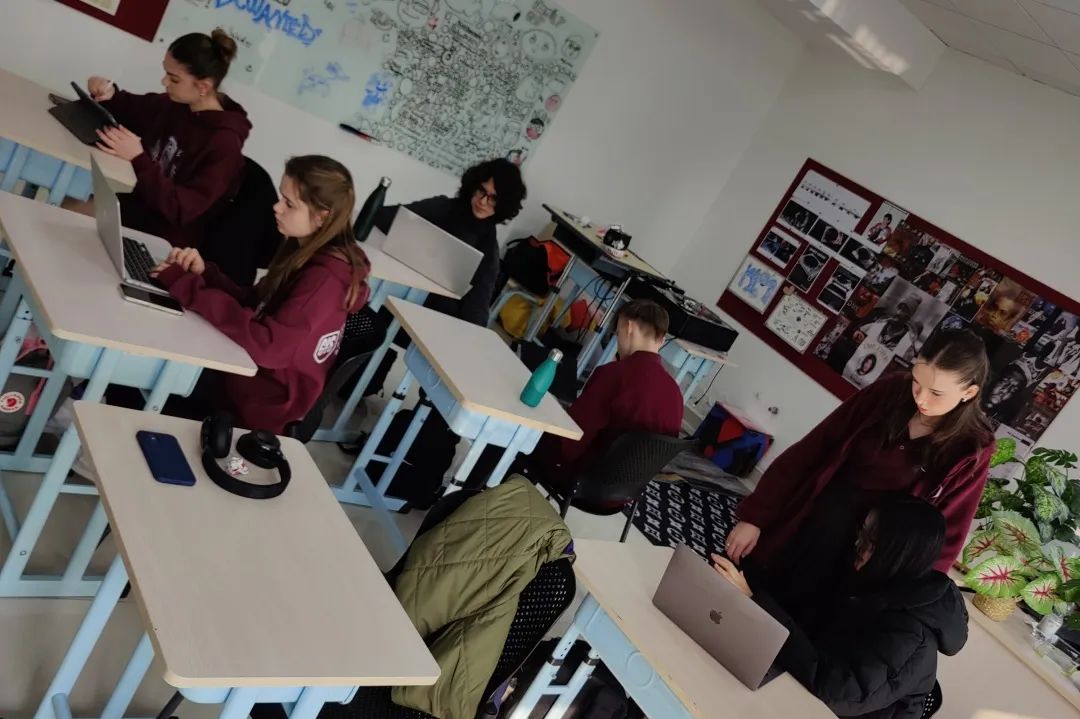
G12 (Mr. Sebastian Adler)
Week 4 delved into the intricate interplay of media and society in German-speaking countries. Studentsdissected media structures, analyzing ownership, regulation, and consumption habits. They scrutinizedmedia bias and its impact on public opinion, alongside exploring the digital realm's influence, includingsocial media dynamics and challenges like misinformation. Emphasis was on fostering media literacy,empowering students to critically engage with media and become discerning citizens. Overall, Week 4provided a rich understanding of the media's role and the imperative of informed media consumption.
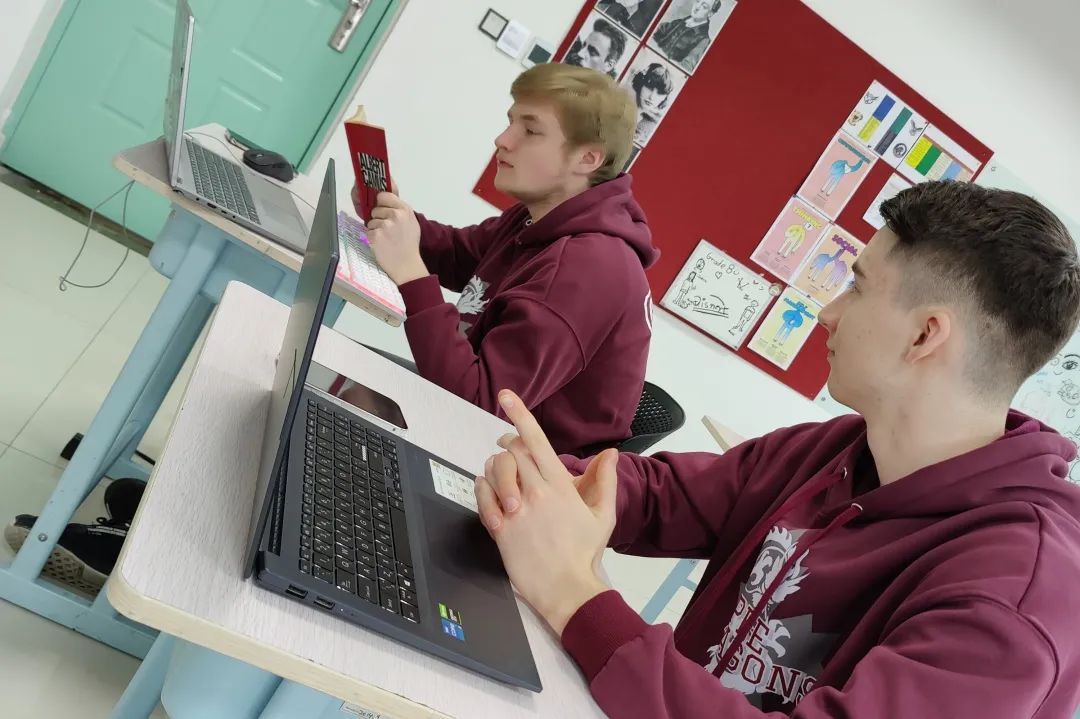
Korean Class
G10 (Ms. Claire Kim)
Our MYP year 5 Korean language and literature class had kept reading closely ‘Who ate up allthe Sing-a’ by Park Wansuh. Especially this week students focused on how they approach thegrowth novel, historical novel and also a novel retaining the linguistic subtleties. Students readout loud, drew in their own way what the author described, and explained and interpretedspecial expressions by the author. G10 students researched and wrote sentences usingvocabularies in the novel to learn the importance of searching a dictionary, analogizing meaningand understanding close-reading and students will finish it during the weekend.Our G10 Korean language and literature students will keep reading closely including creativeactivities about the contents next week.
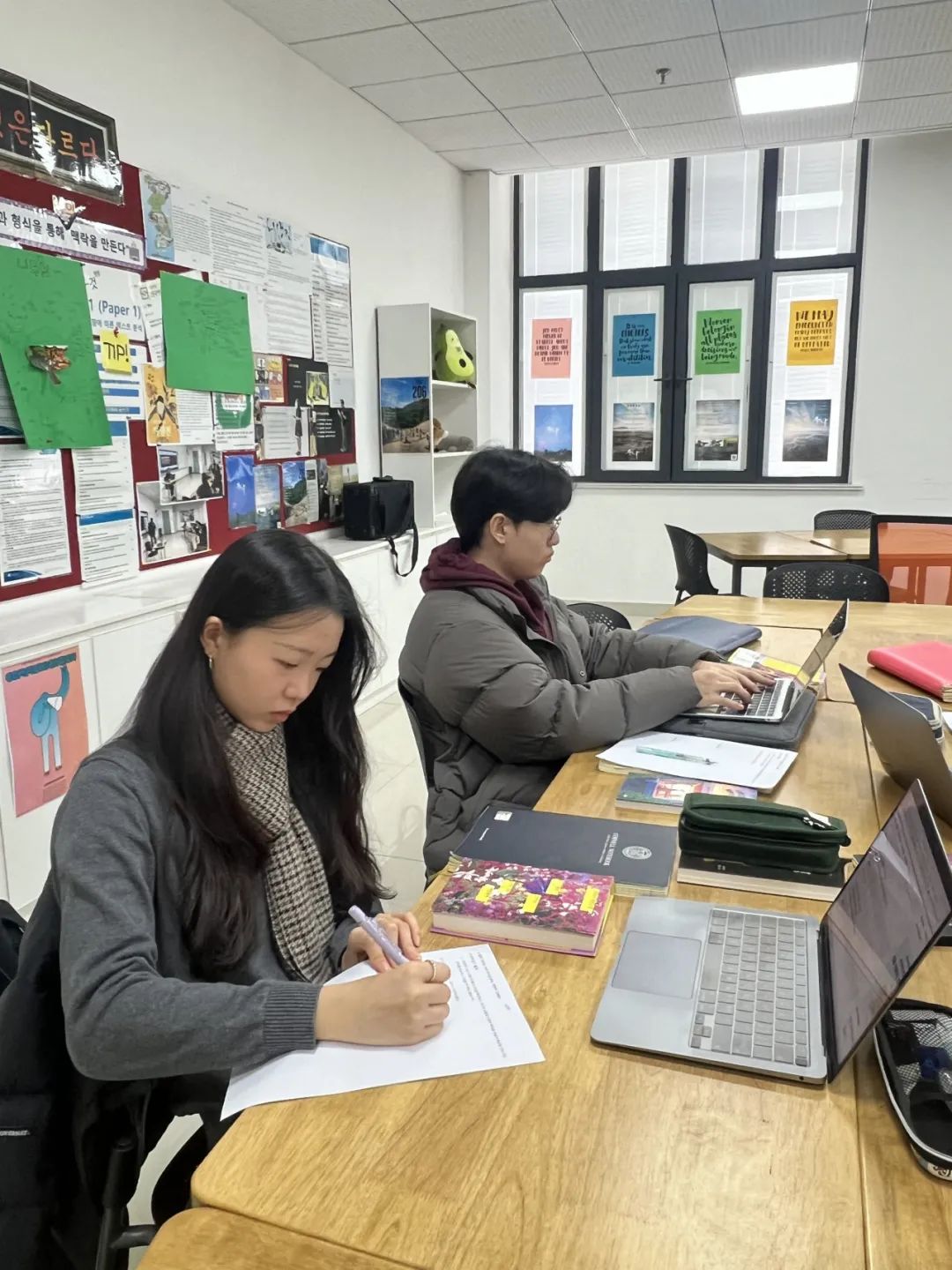

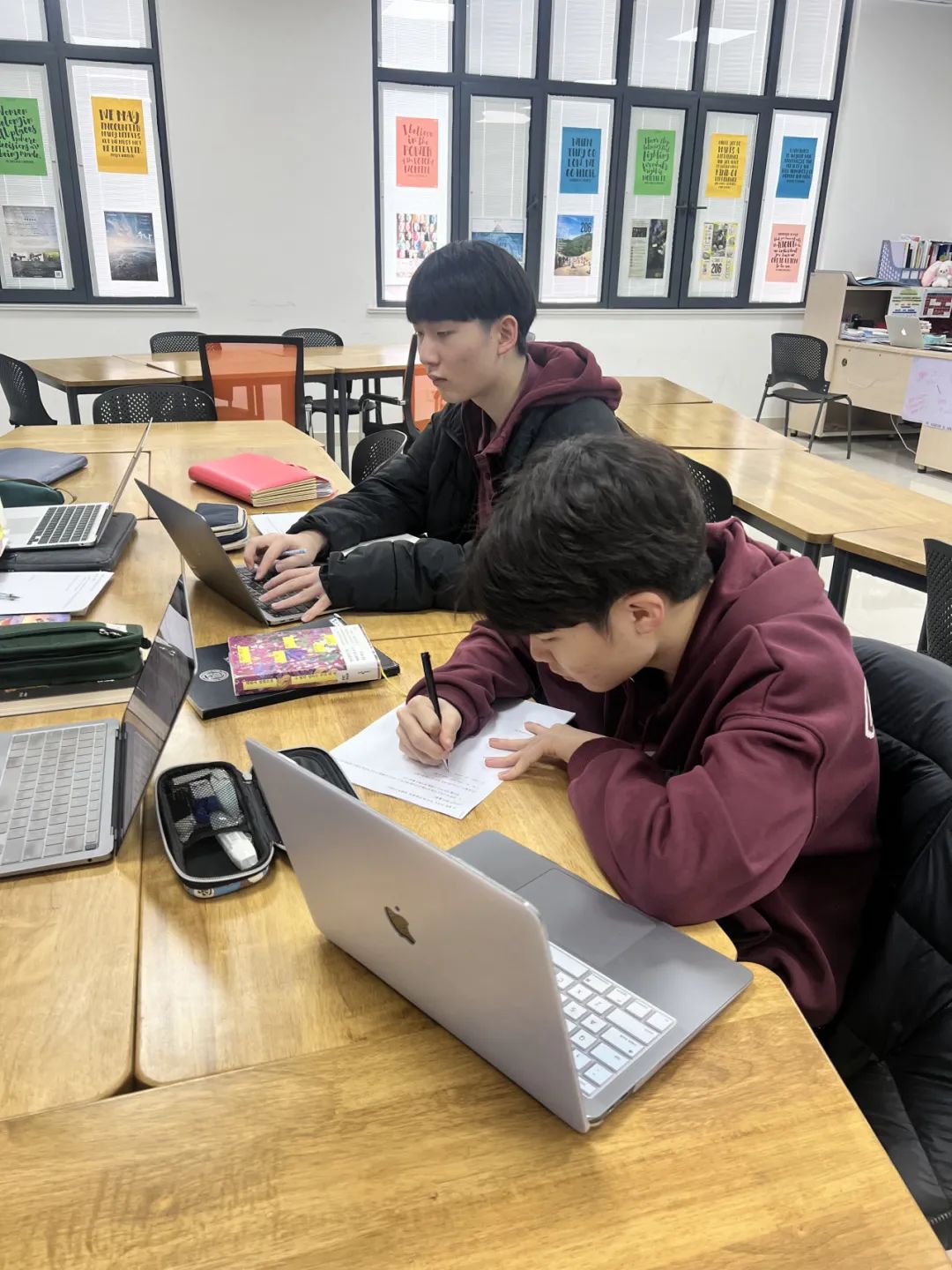

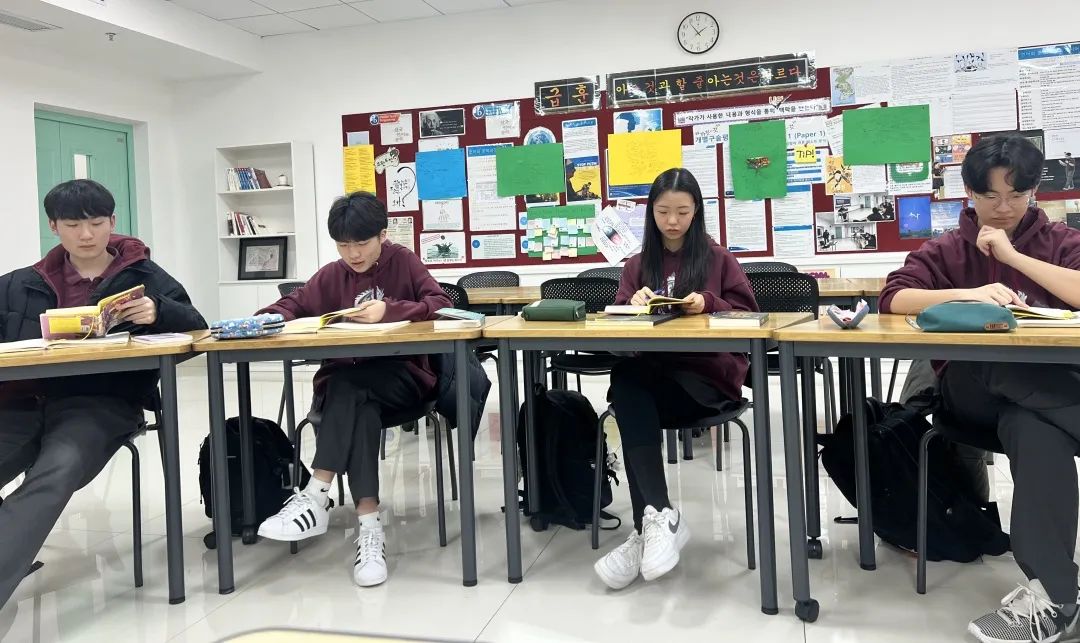
G11 (Ms. Claire Kim)
Our DP year 1 Korean Language and Literature had watched a documentary film by MikiDezaki, “The main battle ground: For 'Comfort women' issue" which focuses on the rhetoricalbattle over the women who sexually served Japanese soldiers before and during World War II.Then G11 discussed what they understood from the film including the conclusion by the director,Miki Dezaki. Our G11 Korean language and literature students will organize the theme andterminologies of the film then will carry out the summative task of the unit.
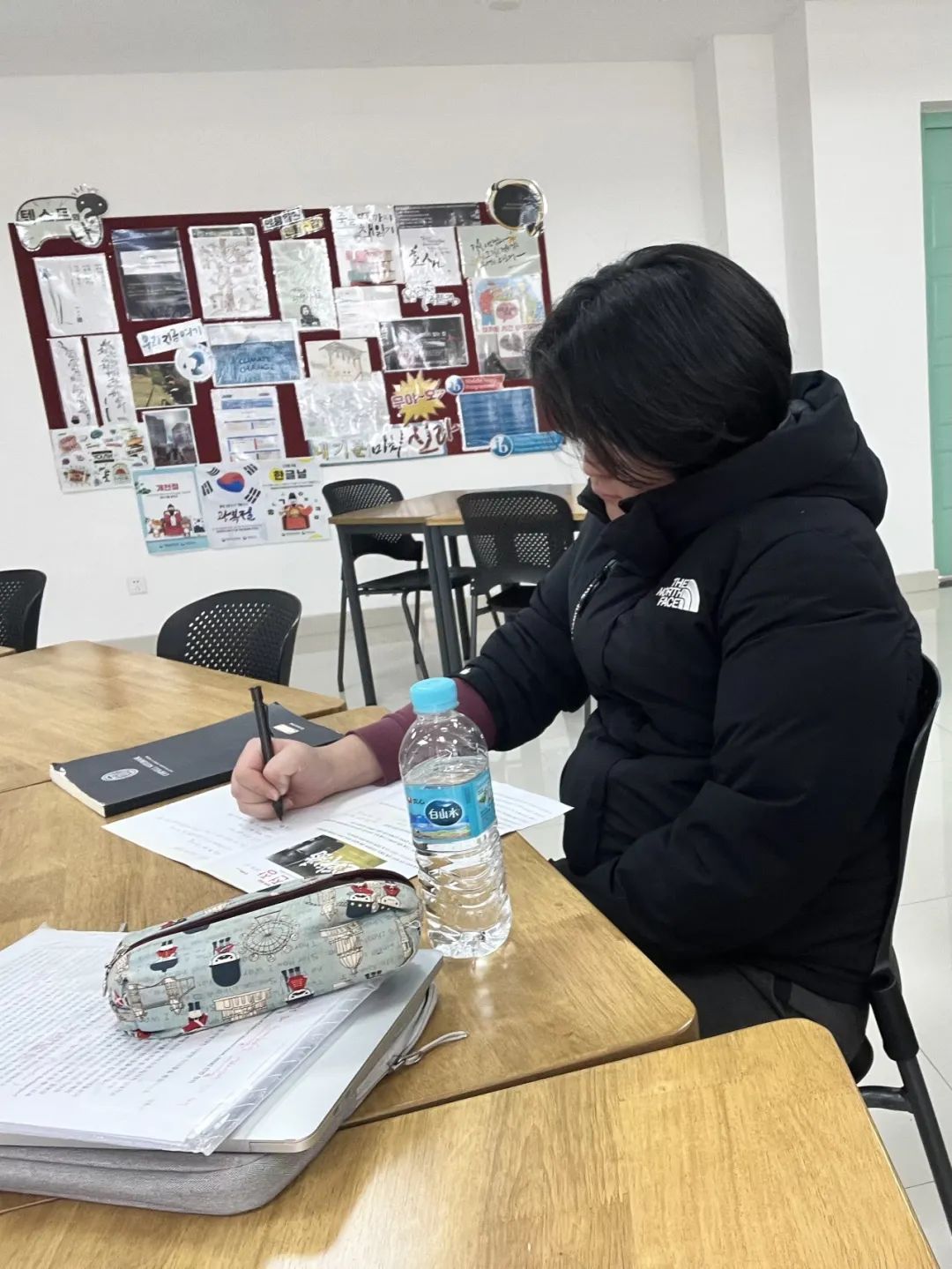

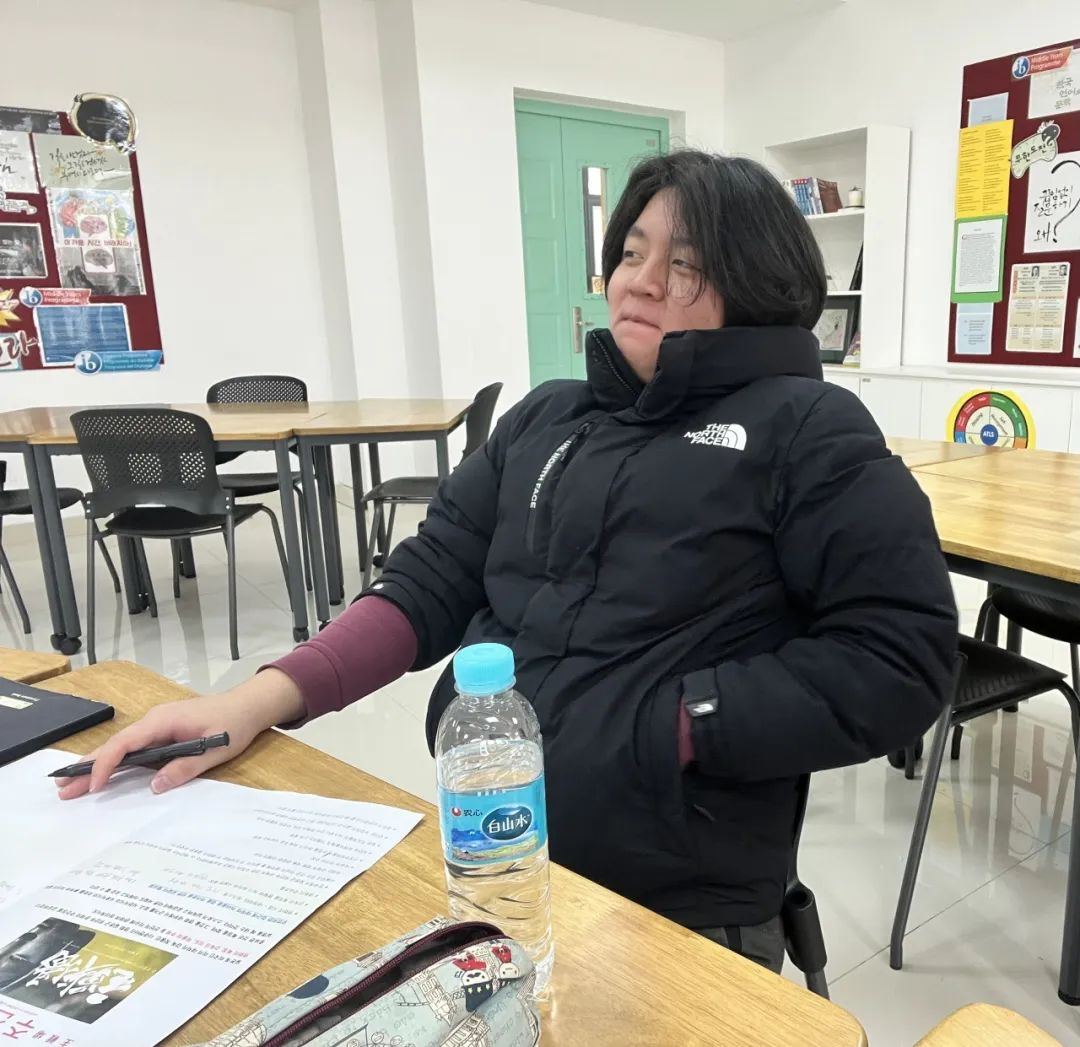
G12 (Ms. Claire Kim)
Our DP year 2 Korean Language and Literature has studied a literary theory focused on rhetoricexpressions and terminologies to find better at the current work Oedipus Tyrannus bySophocles. Also, G12 students read the works closely, the plot in mind being 'Prologos -Parodos - Episode 1, 2, 3, 4, 5 (Epeisodion and Stasimon) - Exodus'.And G12 students had a review for IO preparation and a time to check their progress for thefinal IO assessment. Our G12 students will have peer assessment about their final IO and keepreading closely the final literature work, Oedipus Tyrannus by Sophocles next week.
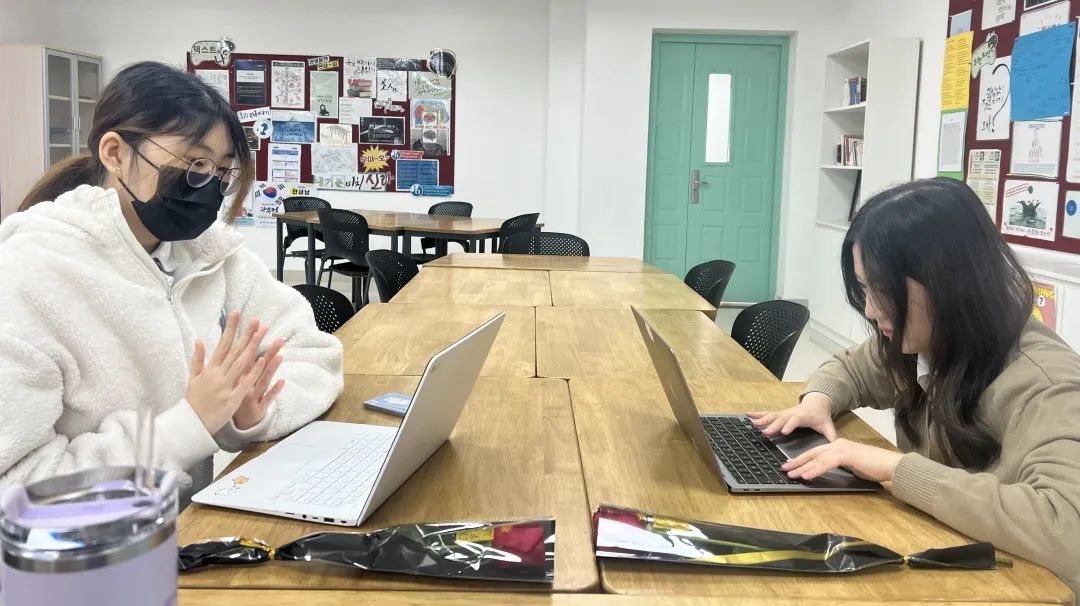
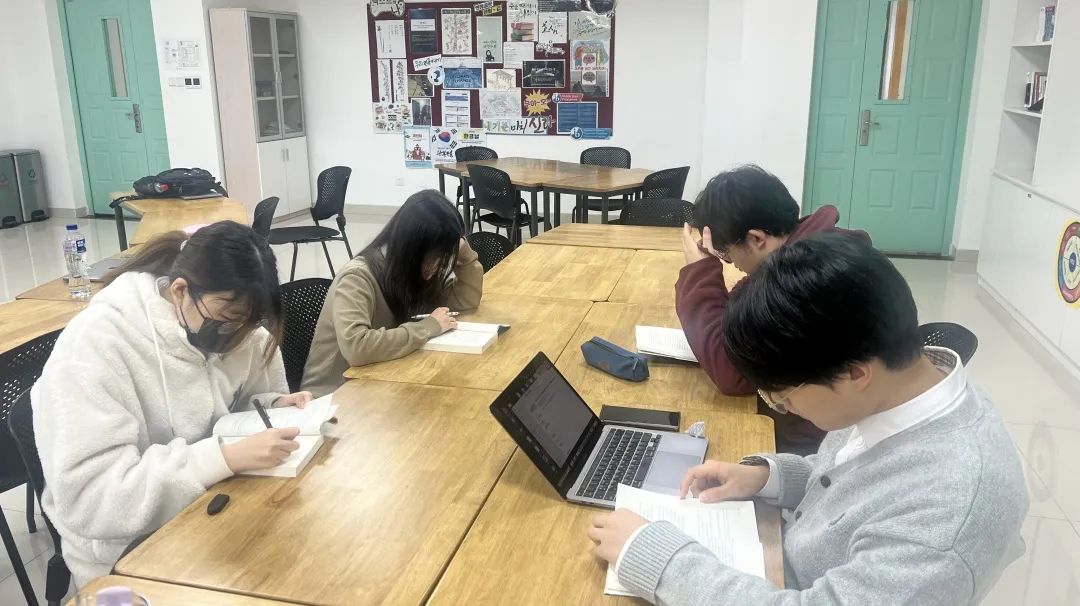

声明:本文内容为国际教育号作者发布,不代表国际教育网的观点和立场,本平台仅提供信息存储服务。
全国500所国际学校大全 / 3分钟匹配5-8所 / 1年名校升学备考托管服务



